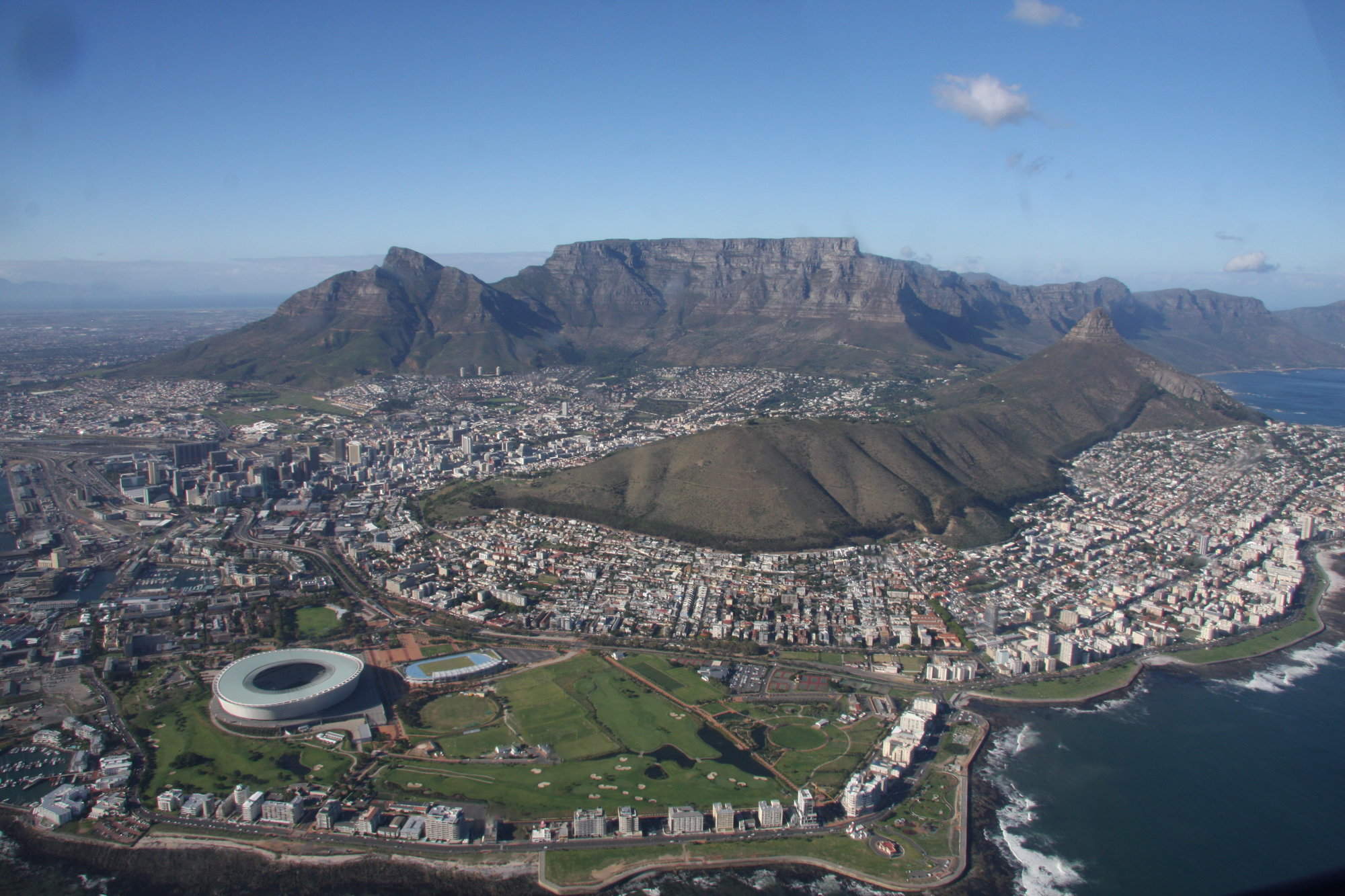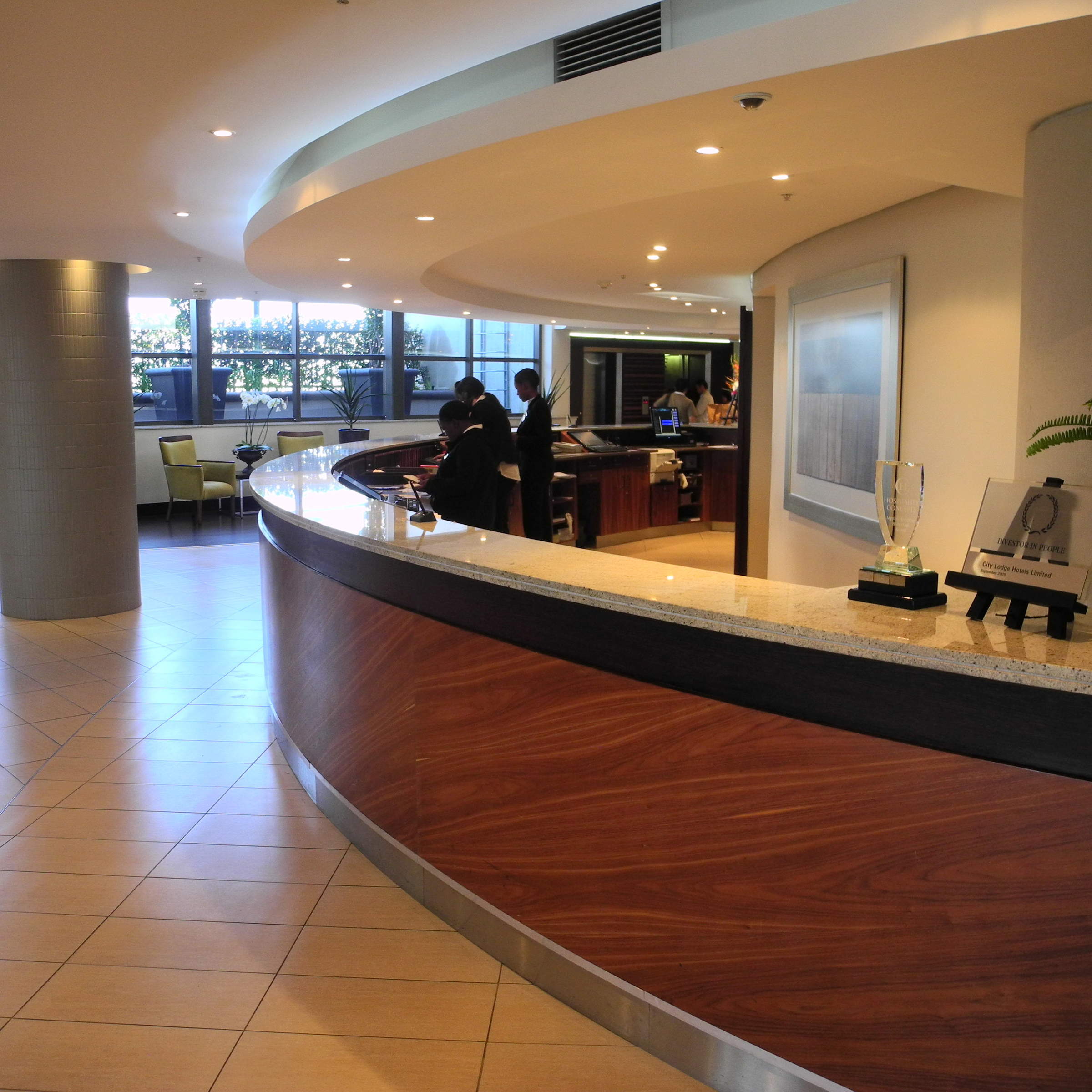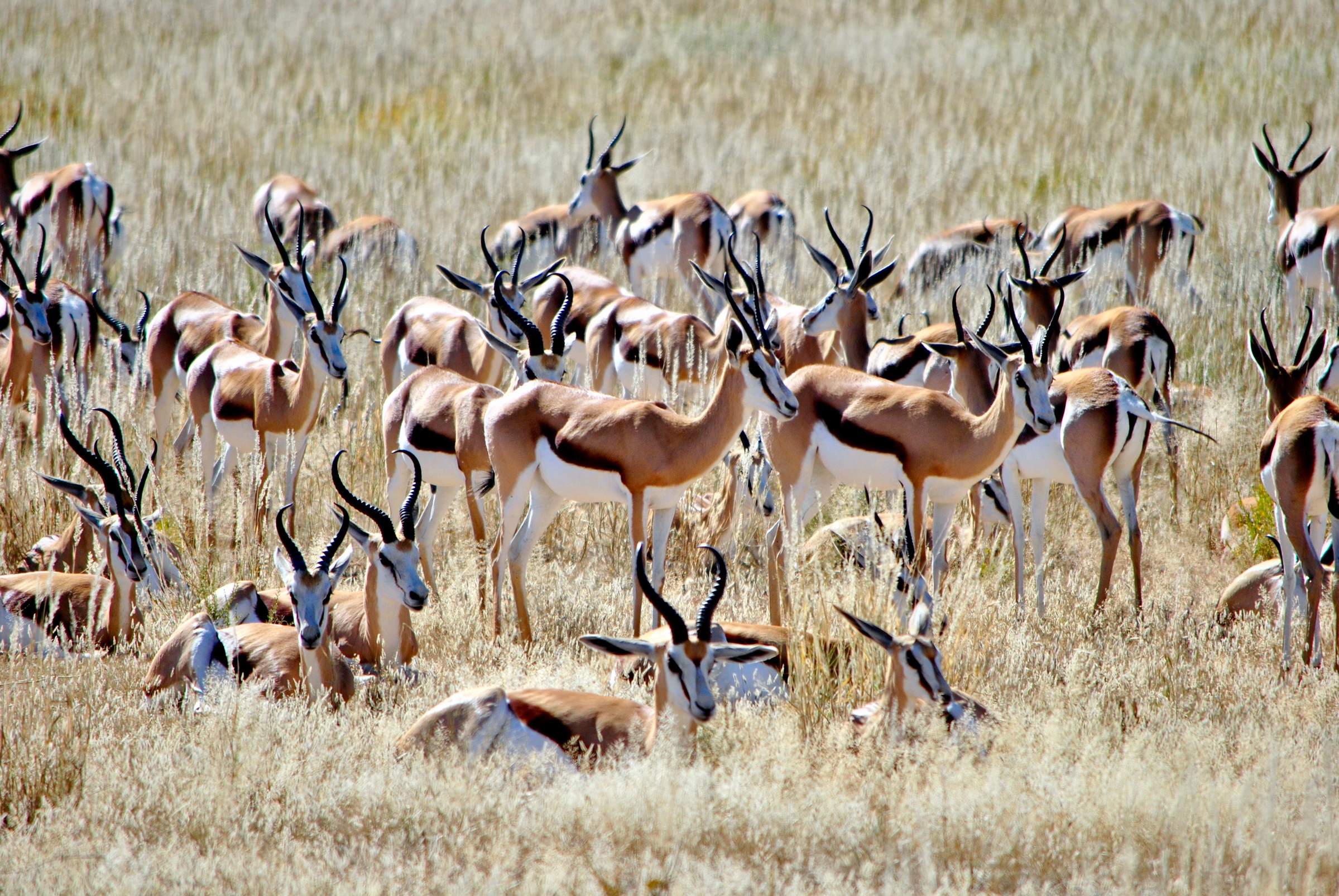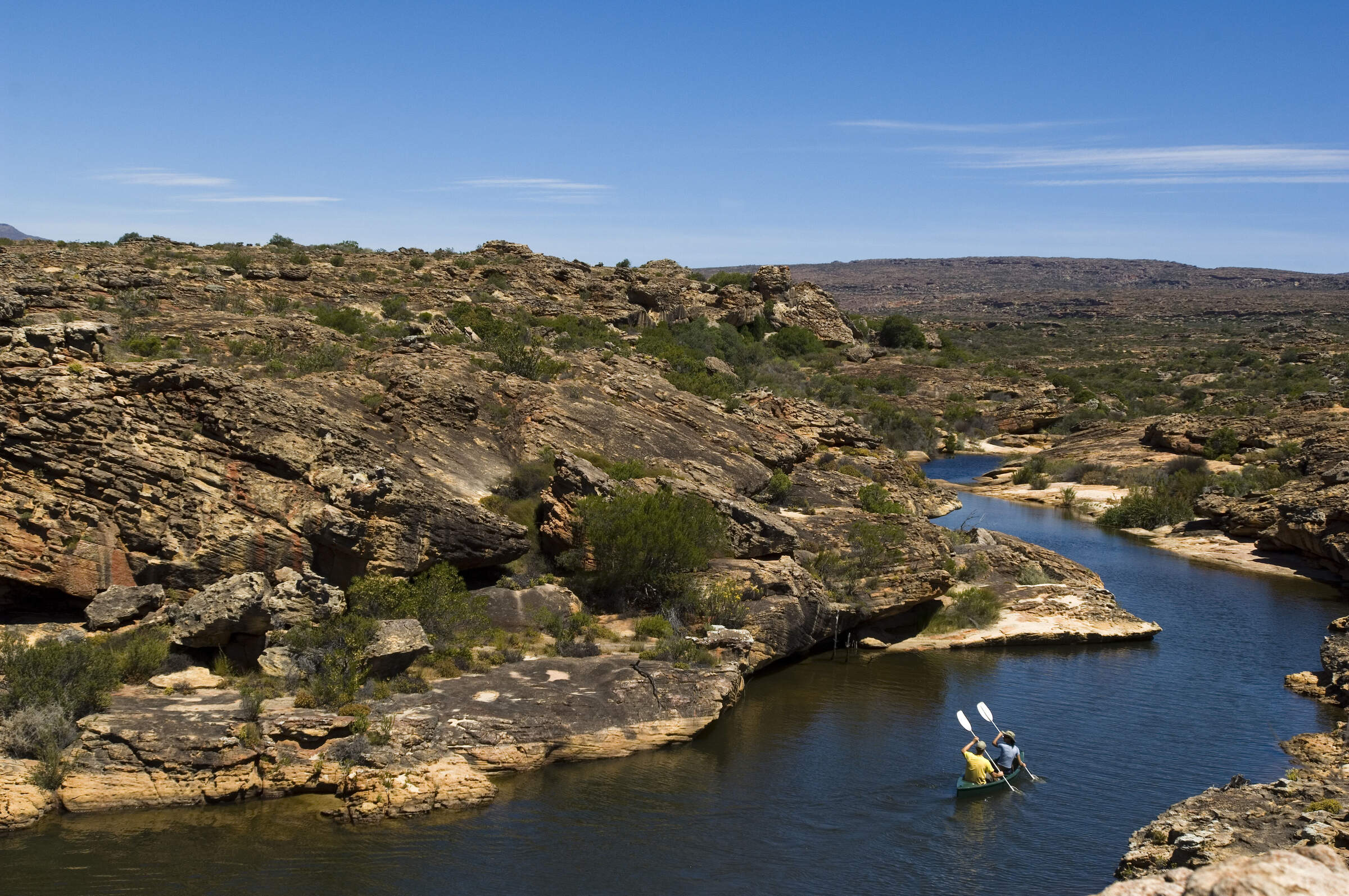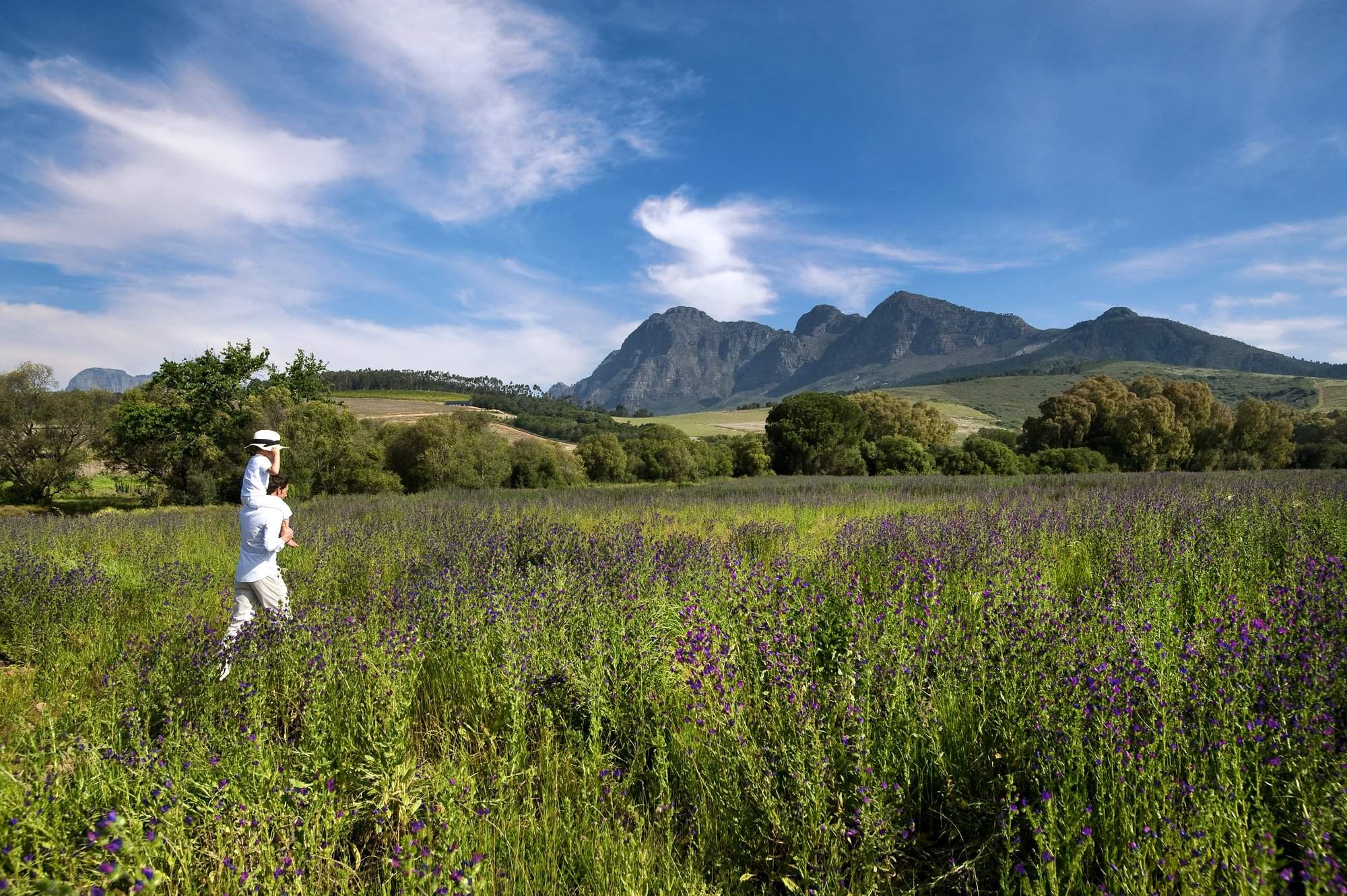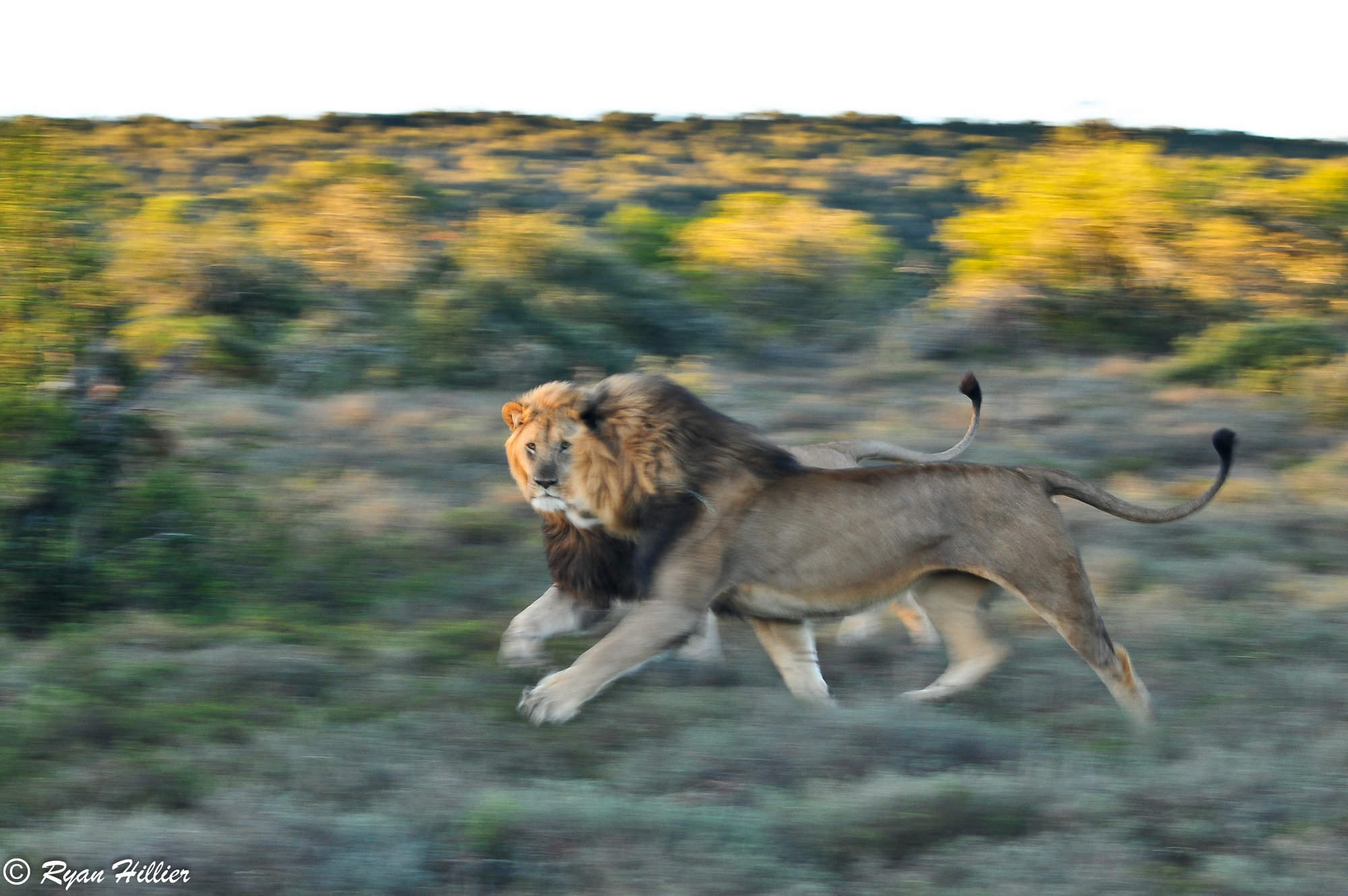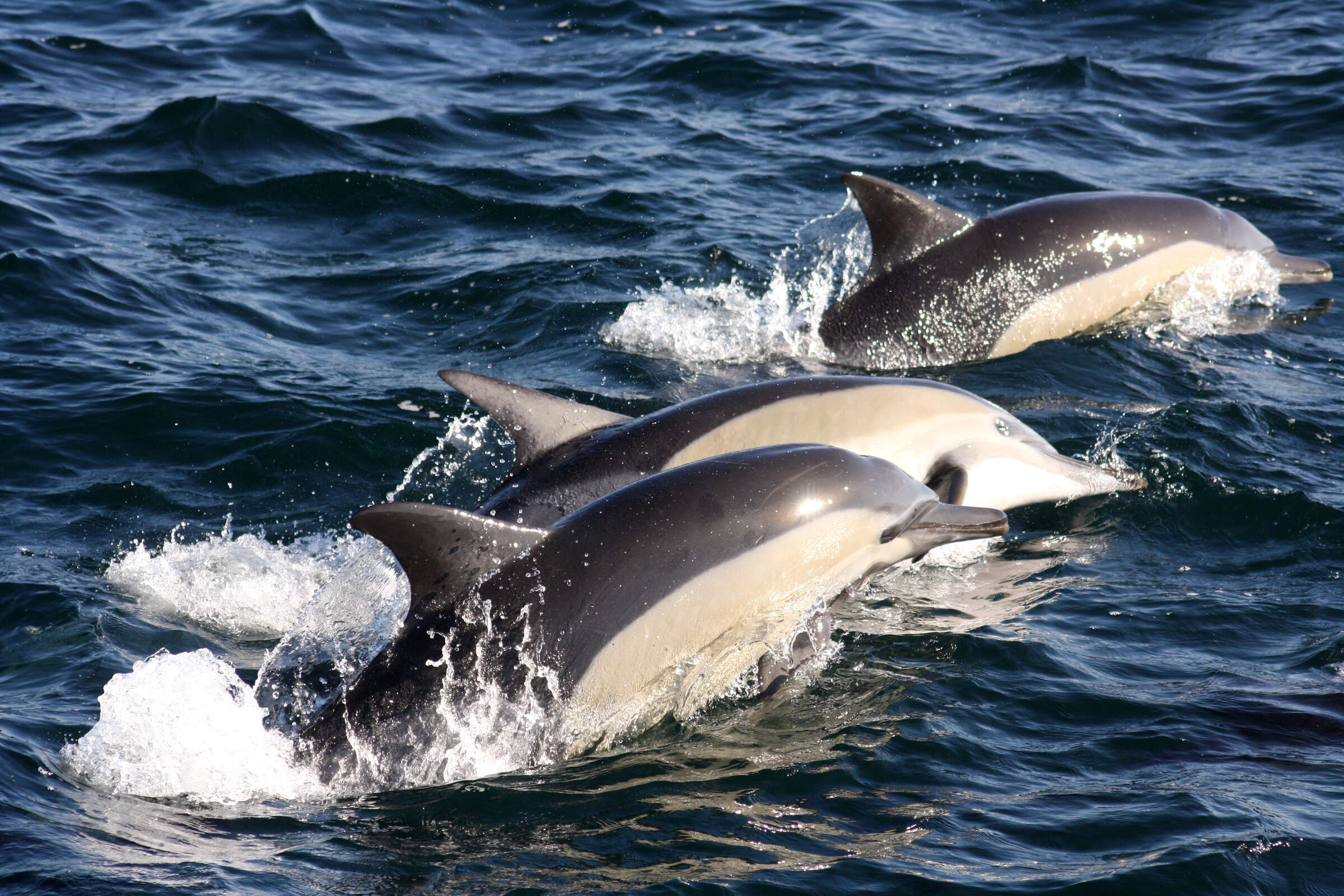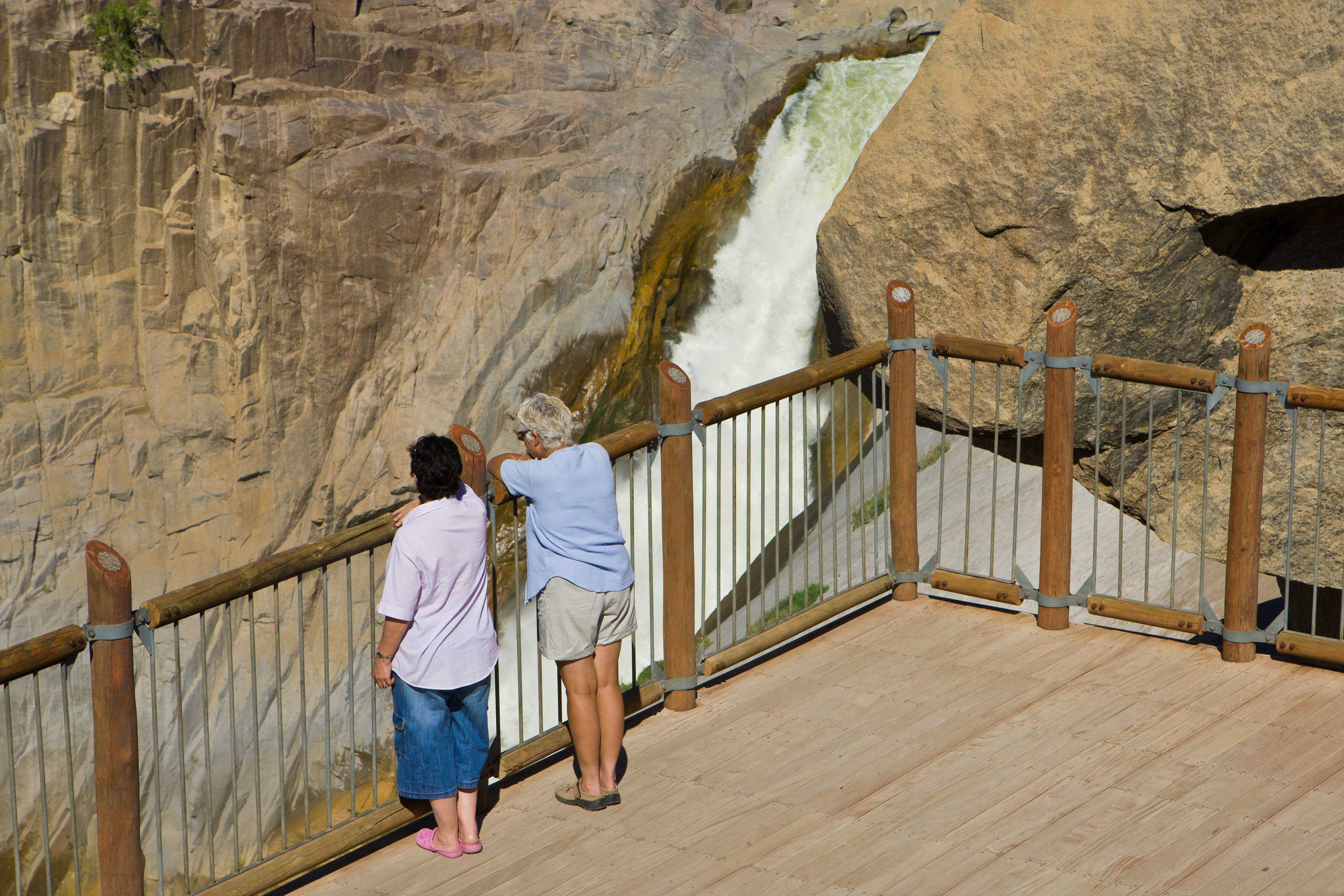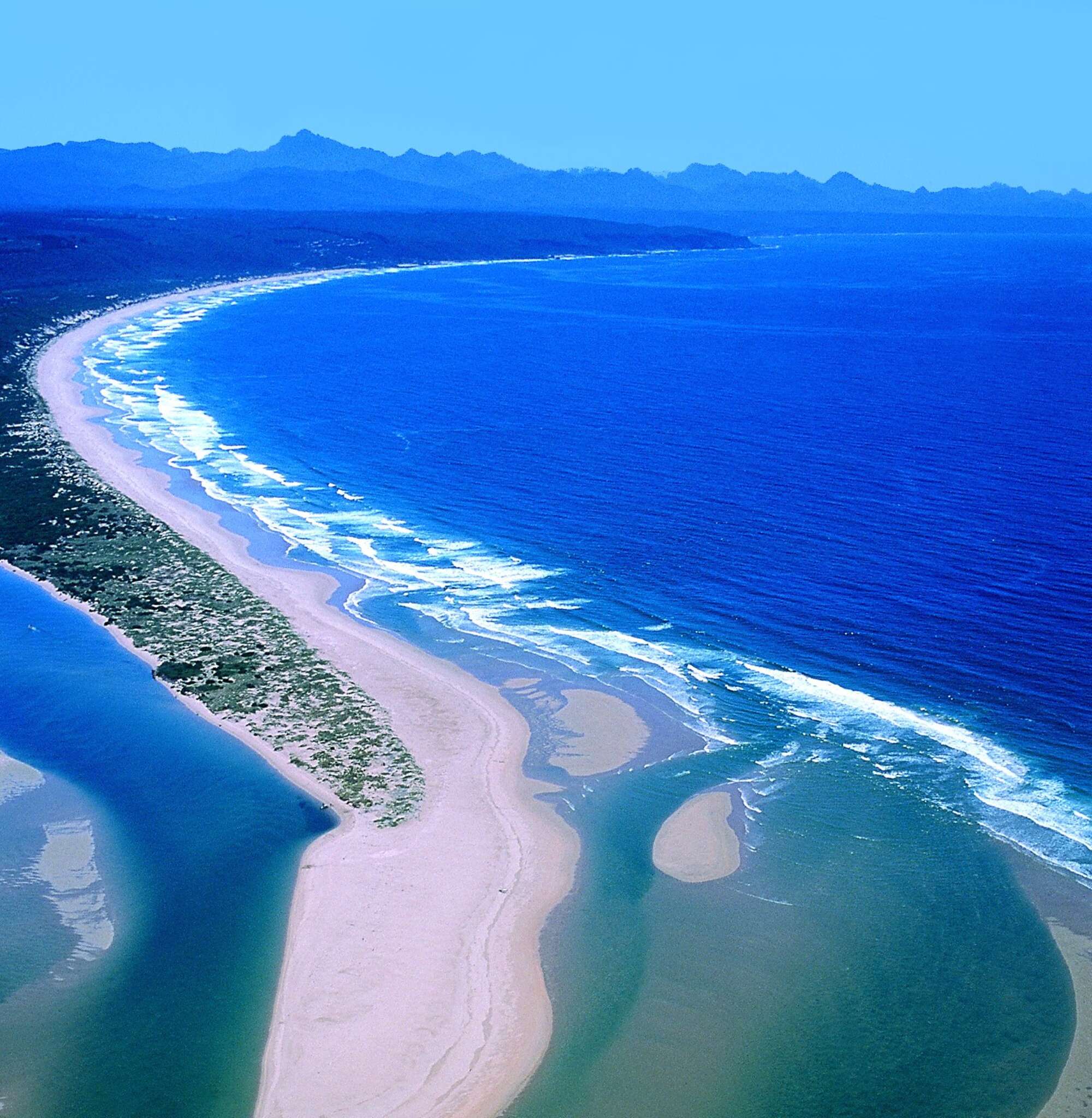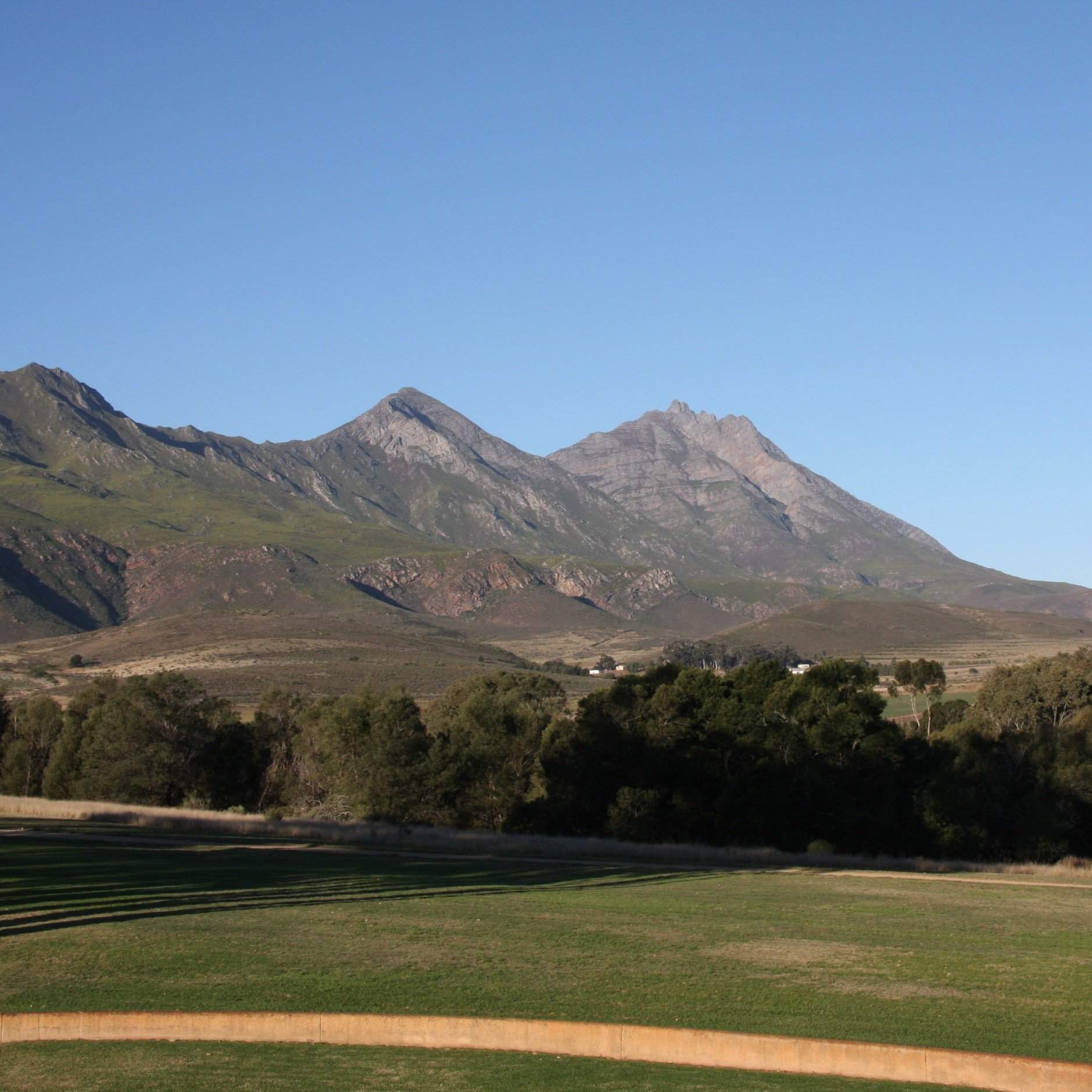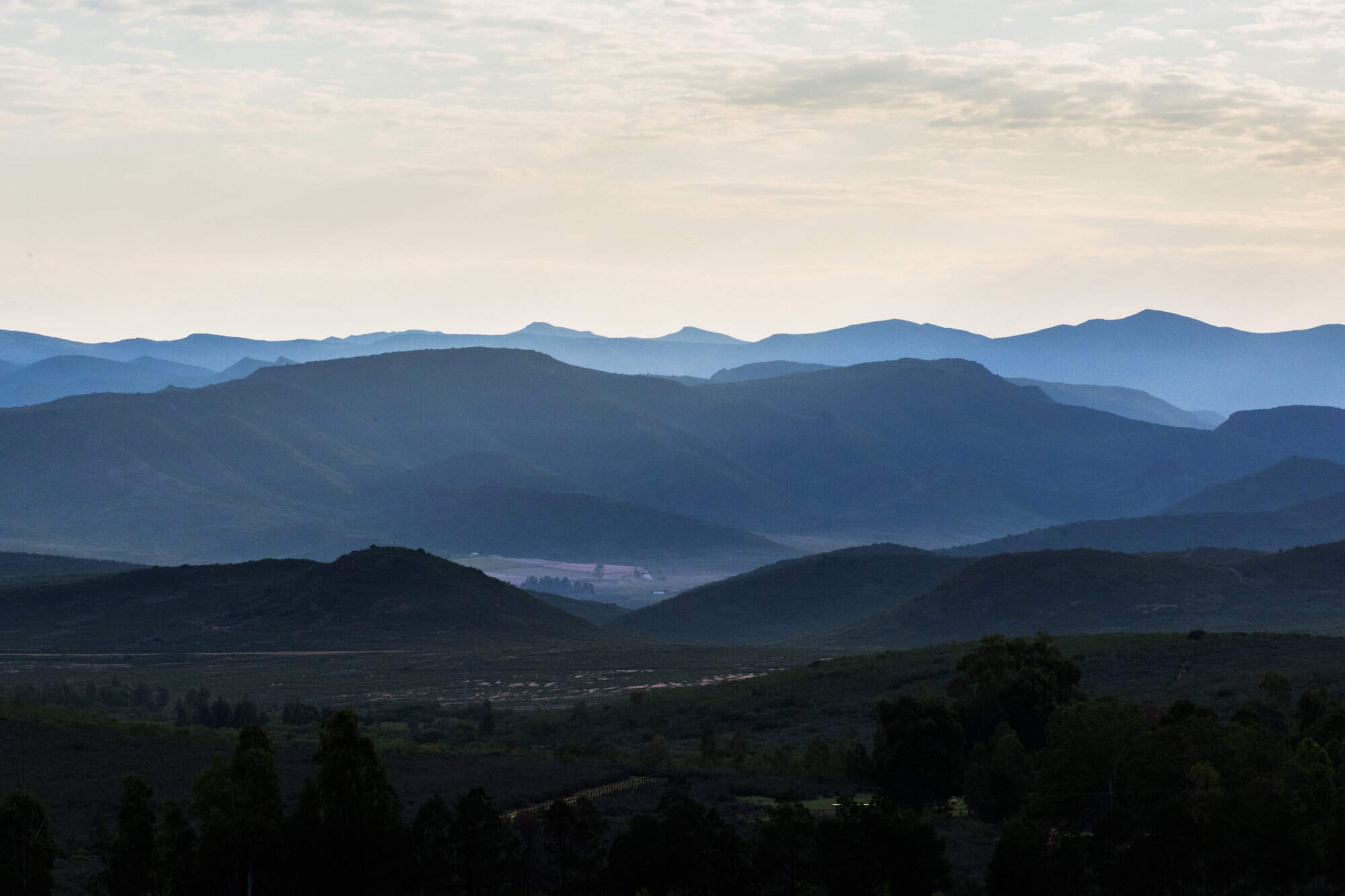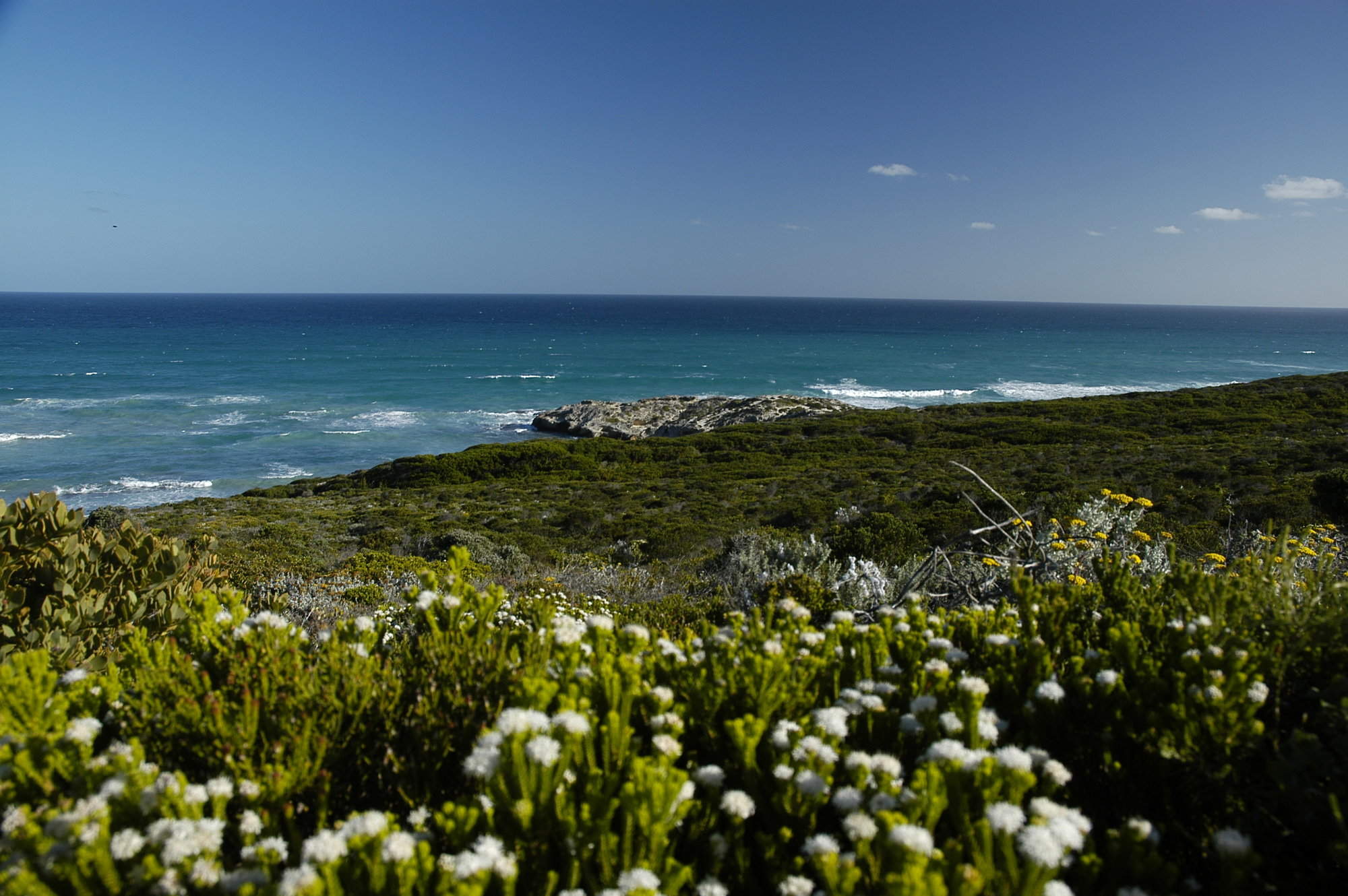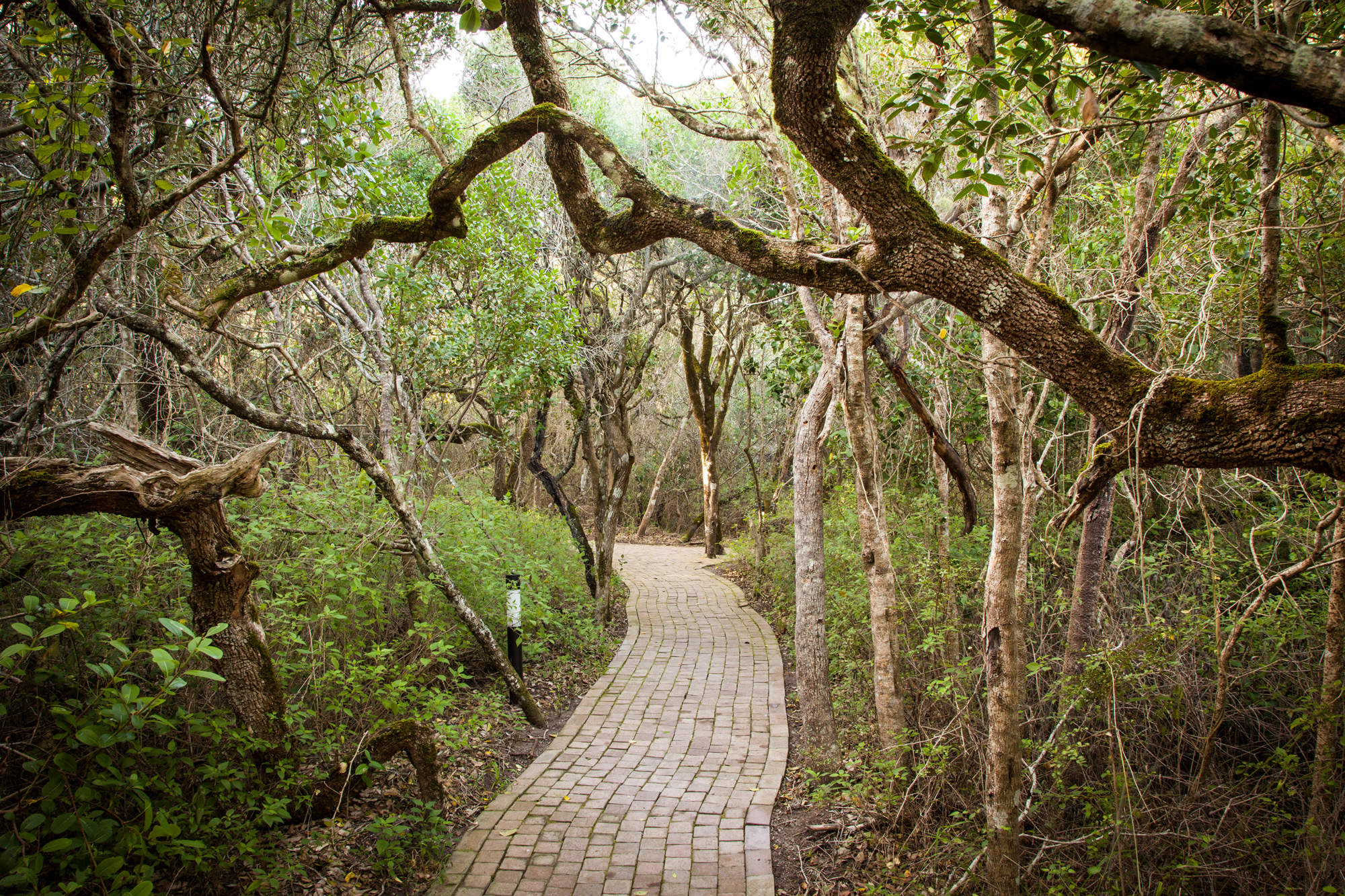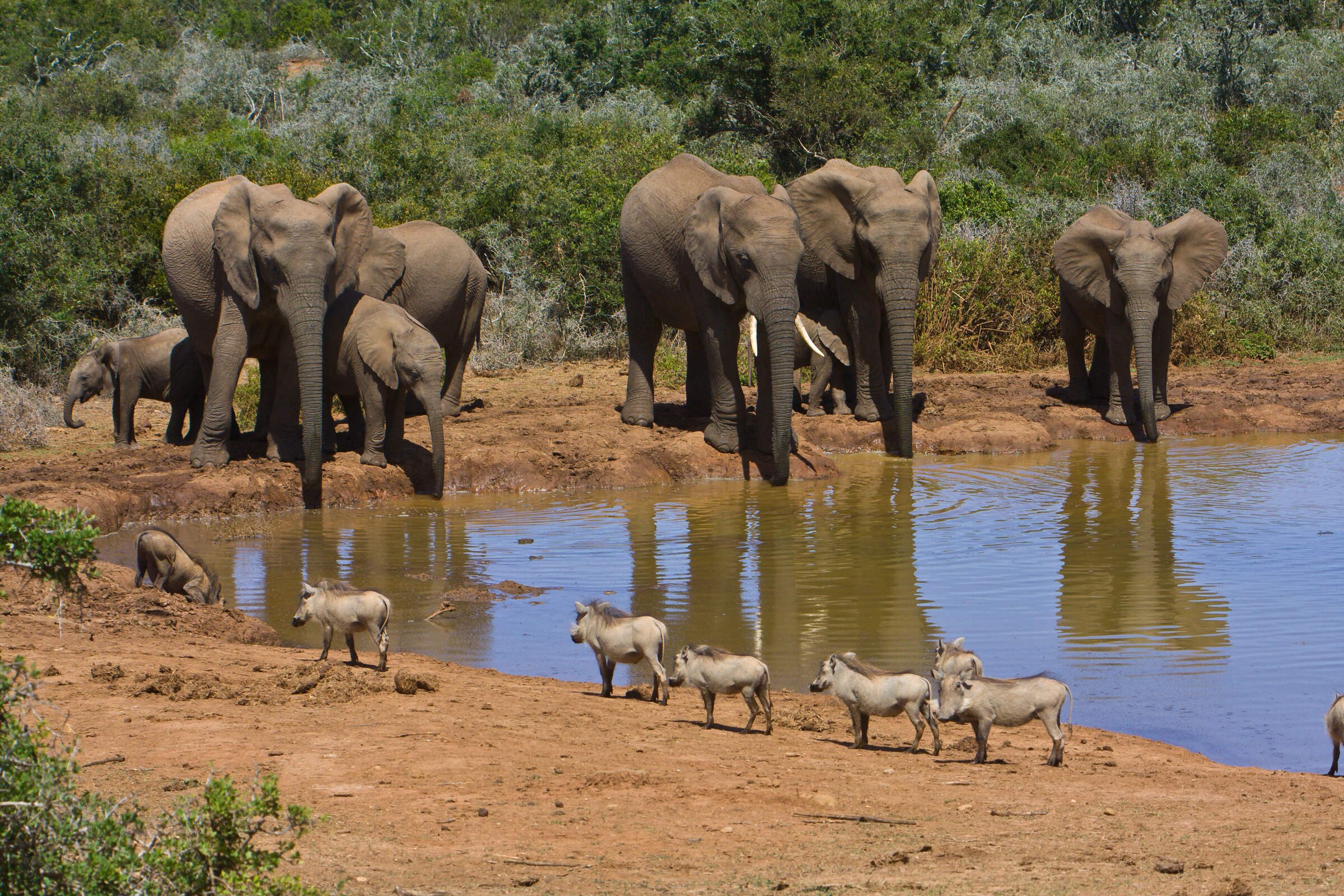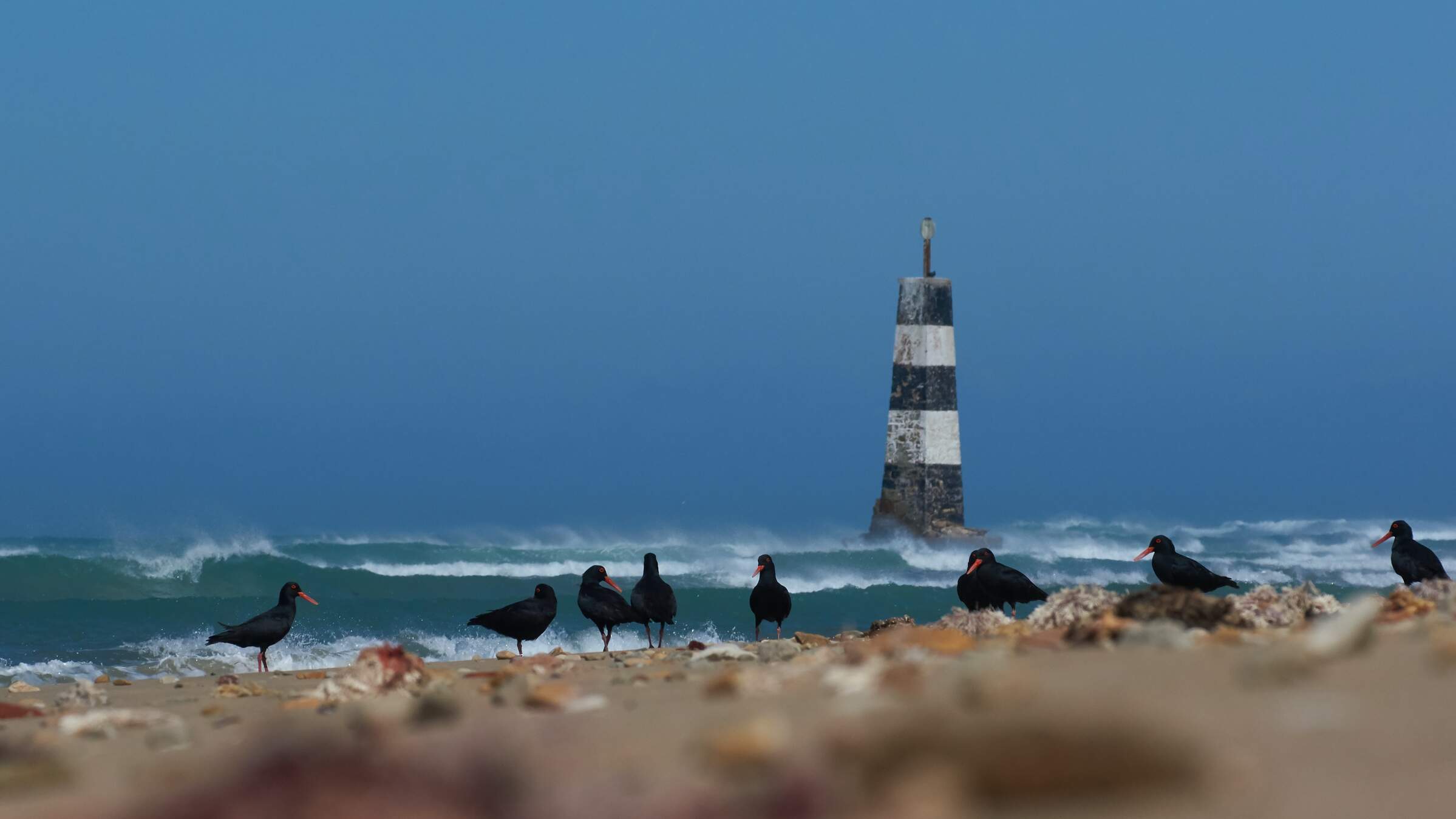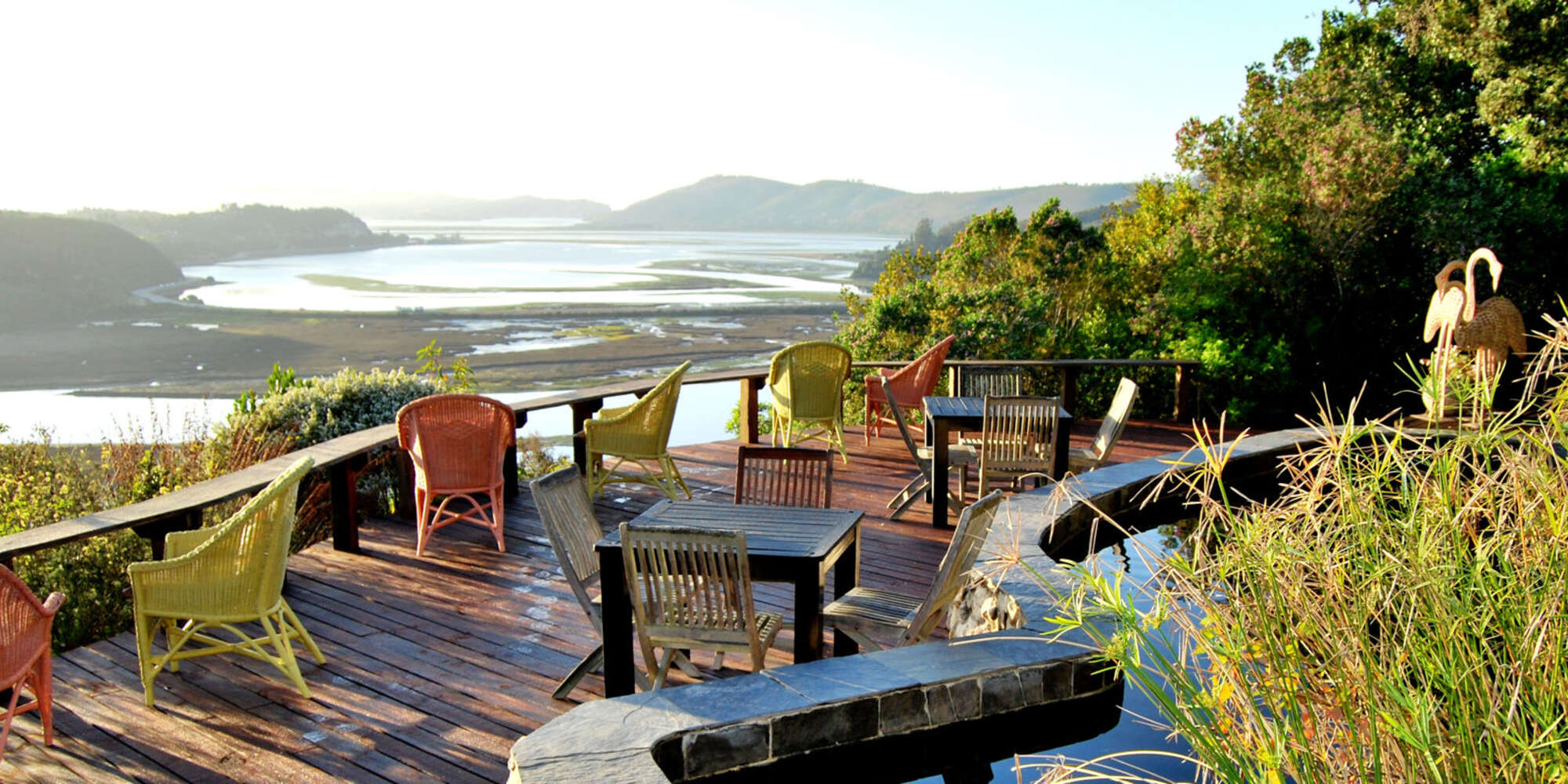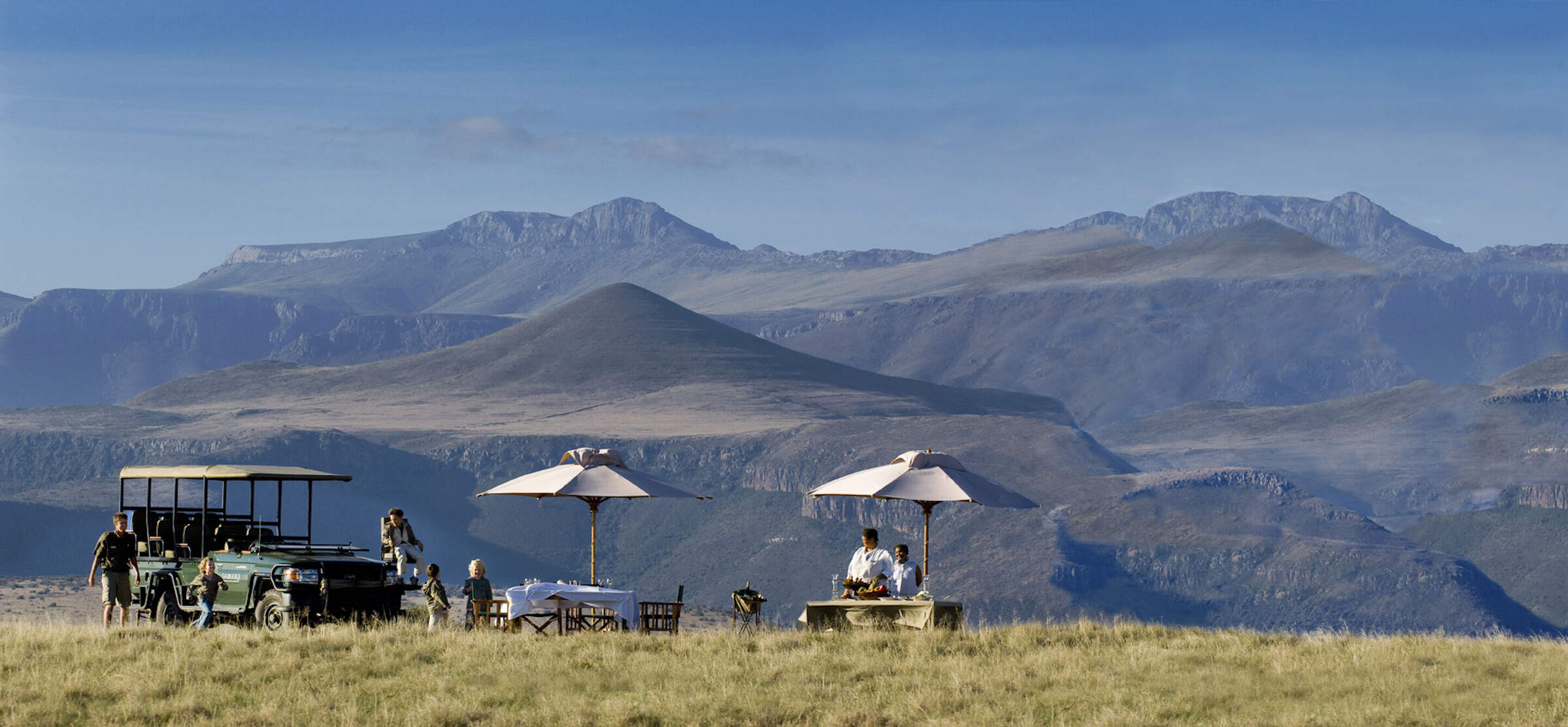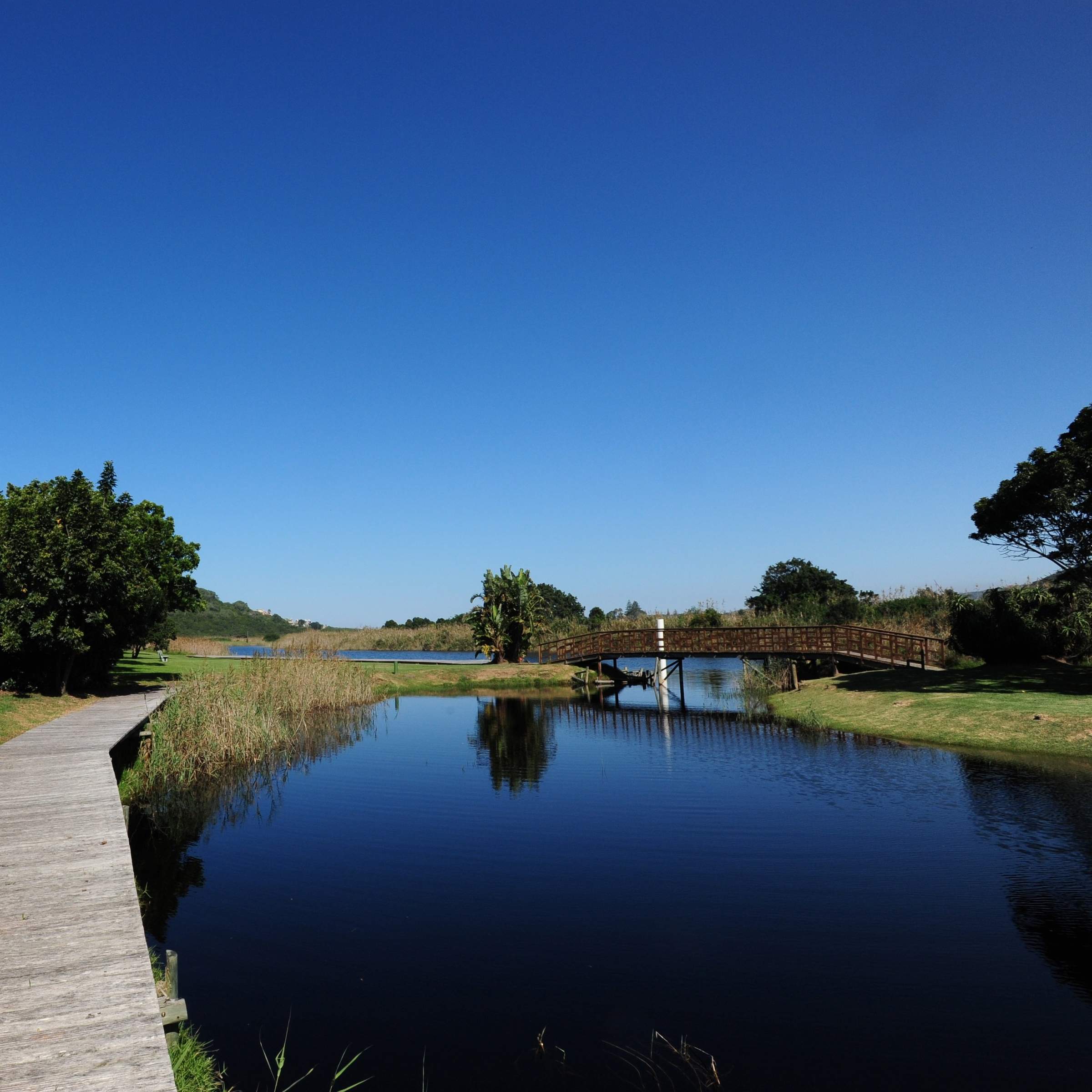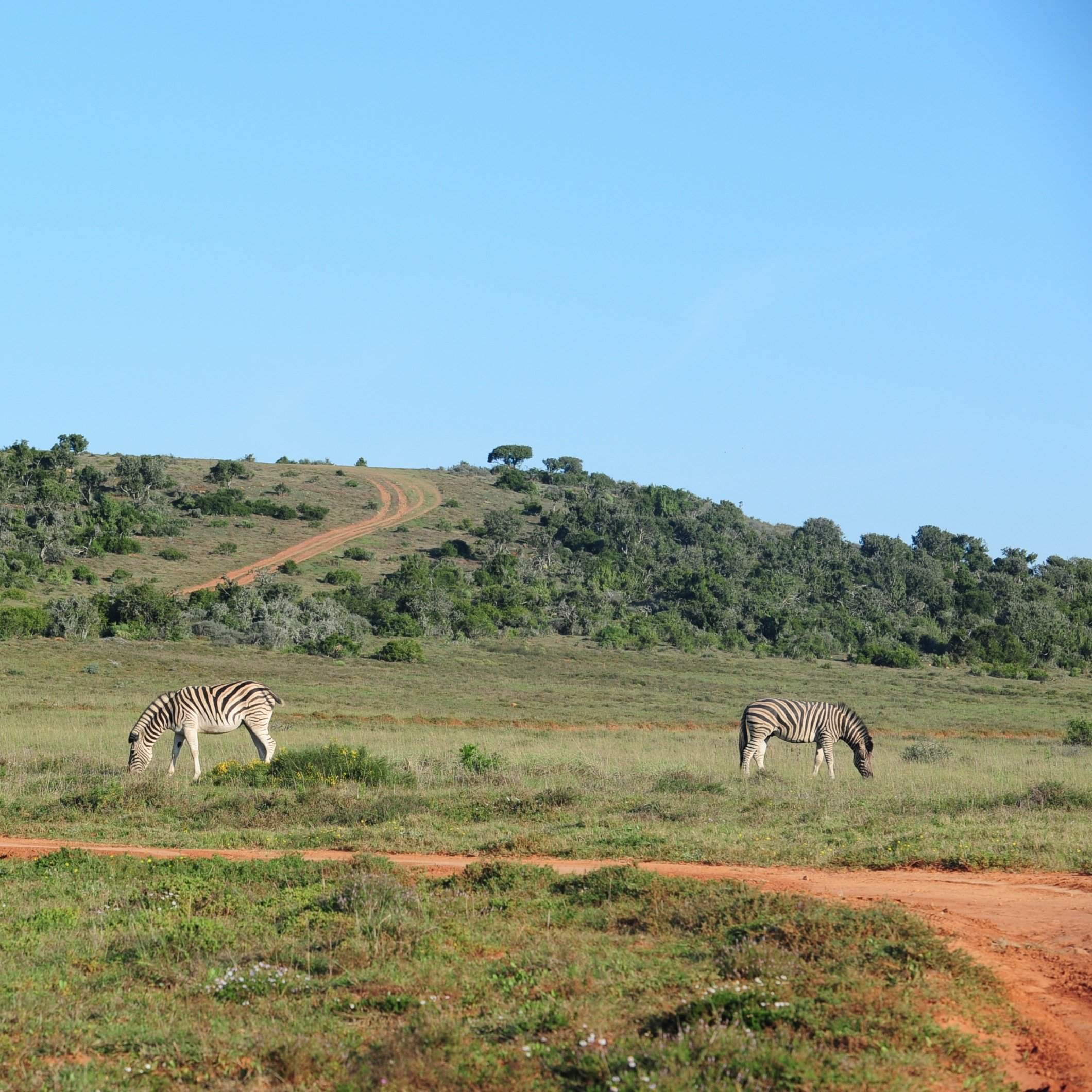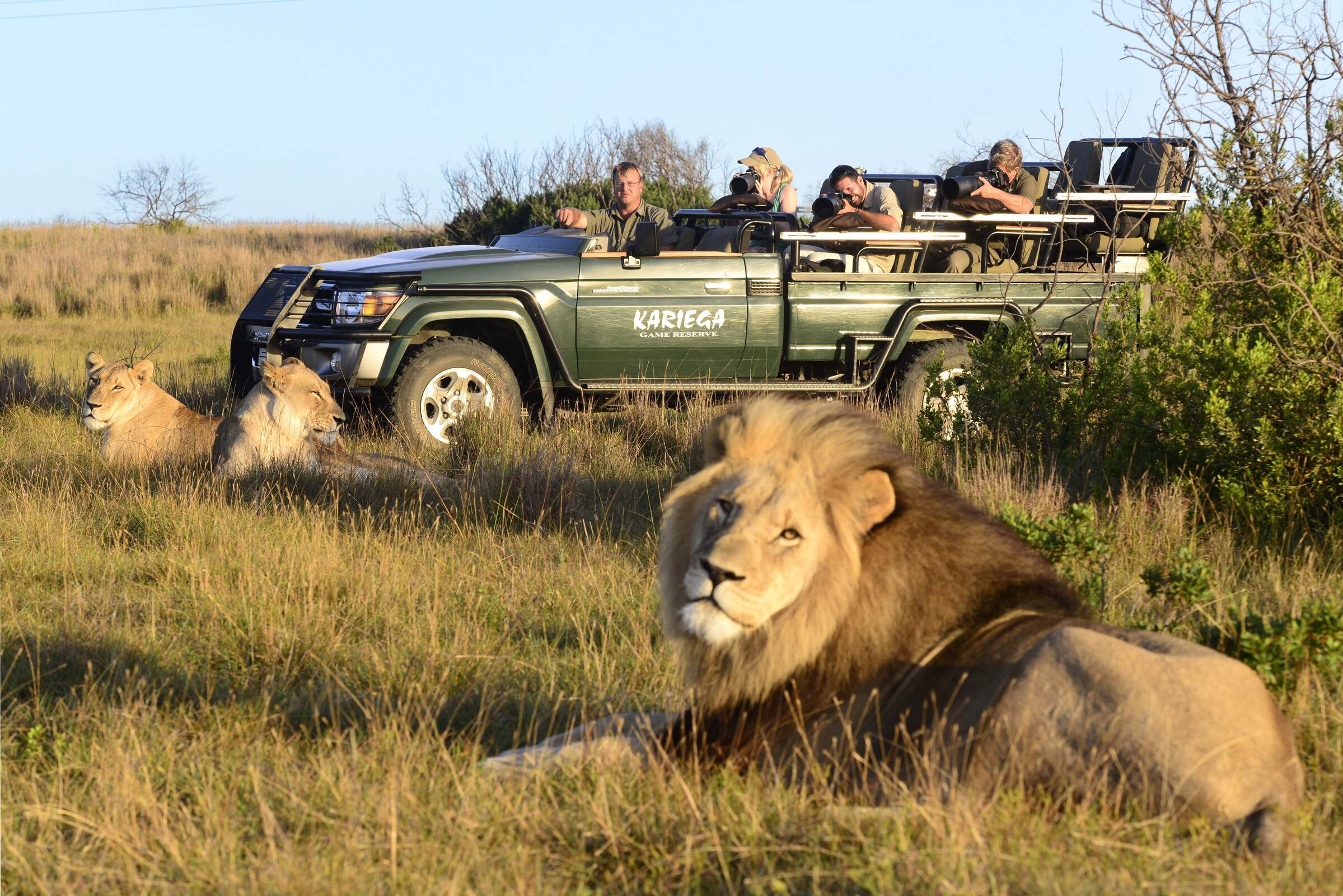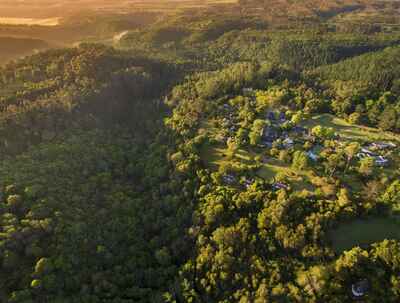
Plettenberg Bay is located in an are with many national parks and nature reserves.
Plettenberg Bay | Garden Route
Plettenberg Bay on the Garden Route
A lovely seaside town in an area notable for its beaches and its reserves.
The seaside town of Plettenberg Bay, usually known just as Plett, is often considered to epitomise South Africa’s Garden Route, with pristine stretches of beach, plus lakes, mountains and rivers all within easy reach. In the area you’ll also find opportunities for a variety of outdoor activities, including the world’s highest bungee jump, a high-level canopy walk in the forest, and great whale-watching. Also nearby is the Robberg Nature Reserve, with its colony of Cape fur seals.
The Garden Route town of Plettenberg Bay, home to more than 50,000 people, stands on the rocky Robberg Peninsula right above the ocean. From this vantage point, there are great views of beaches, lagoons and the local indigenous forests.
Just a five-minute drive from Plettenberg Bay, the long, narrow Keurbooms Lagoon sits at the mouths of the Keurbooms and Bitou rivers, just before they flow into the ocean. The lagoon separates the centre of Plett from its dispersed northern suburb of Keurboomstrand. The area has a number of lovely beaches, including Central Beach, Robberg Beach, Robberg 5 and Keurboomstrand – at all of which you can organise activities.

Trips visiting Garden Route | Plettenberg
Just ideas, we'll always tailor-make a trip for you
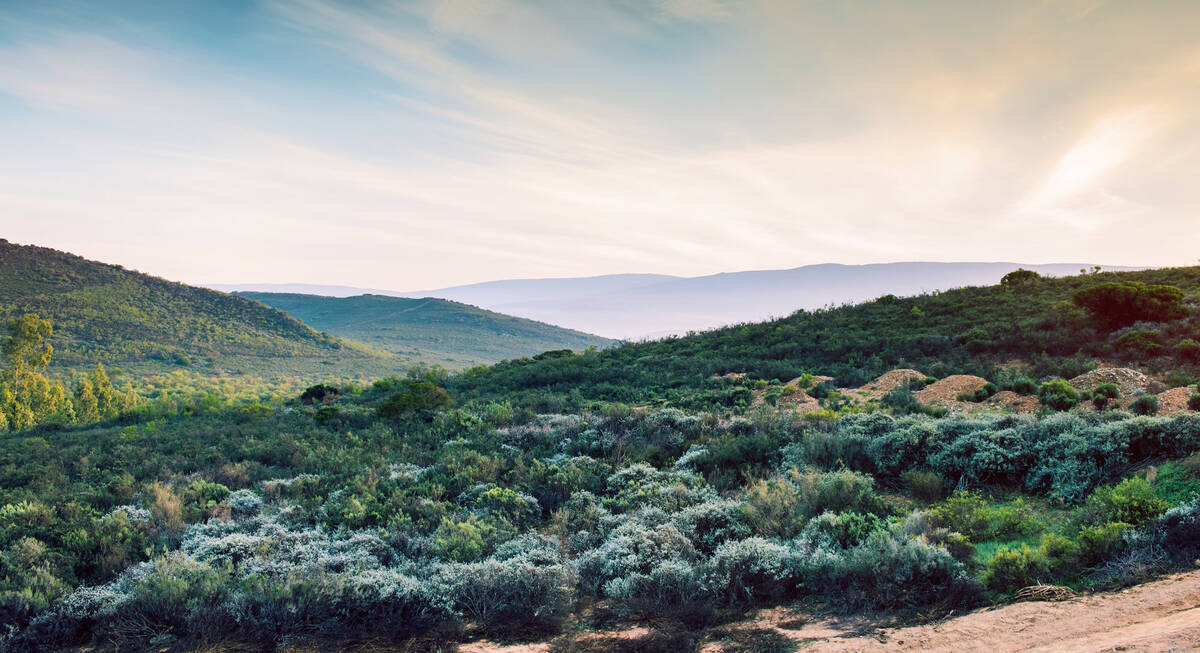
Cape Genet Self-drive Safari
20 days • 8 locations
CAPE TOWN AIRPORT TO CAPE TOWN AIRPORT
Enjoy fine-dining in Cape Town, whale-watching in Hermanus, and a range of walking and water-based activities throughout De Hoop’s Nature Reserve, the Klein Karoo and Plettenberg. This relaxed self-driven safari concludes with stays in The Winelands and Namaqualand.
US$3,840 - US$4,540 per person
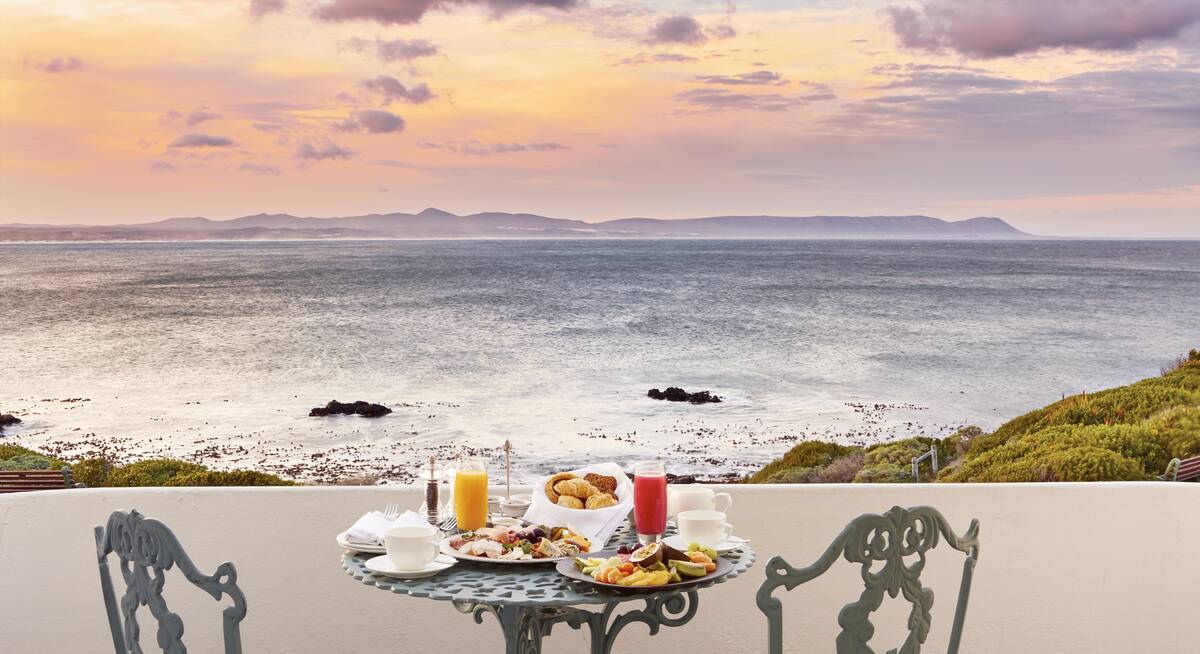
Cape Grysbok Self-drive Safari
20 days • 8 locations
CAPE TOWN AIRPORT TO CAPE TOWN AIRPORT
Explore Cape Town, Hermanus, Franschhoek and Namaqualand, amongst other memorable destinations, during this leisurely self-driven safari. Fine dining, varied activities and impressively comfortable lodges, estates and country houses await.
US$5,000 - US$7,530 per person
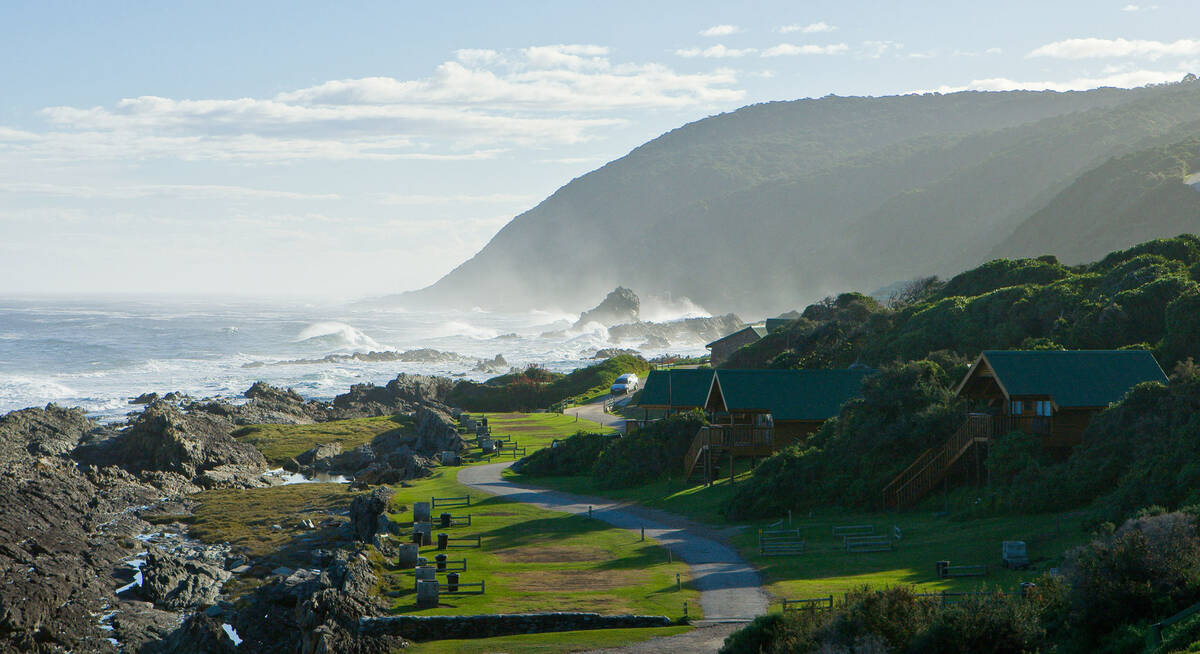
Bontebok Self-drive Safari
12 days • 5 locations
CAPE TOWN AIRPORT TO PORT ELIZABETH AIRPORT
This varied and great-value self-drive trip visits Cape Town, the Winelands and diverse sections of the Garden Route, staying at great places with real local character. It’s ideal for active couples and families who want to explore the Cape’s stunning locations.
US$1,870 - US$1,960 per person
Most recent reviews of our trips to Garden Route | Plettenberg
Click below to browse all 49 reviews from Plettenberg Bay | Garden Route. All from our travellers; all are in full & unedited.
Arrived 22 Jul 2023, 15 nights
"My Jul 2023 trip"
Overall rating: Excellent
Arrived 4 Apr 2023, 20 nights
"My Apr 2023 trip"
Overall rating: Excellent
Arrived 25 Sep 2022, 15 nights
"My Sep 2022 trip"
Overall rating: Excellent
Arrived 4 Apr 2022, 17 nights
"My Apr 2022 trip"
Overall rating: Excellent
Arrived 26 Jan 2020, 20 nights
"Summary of our trip"
Overall rating: Excellent
Arrived 11 Jan 2020, 14 nights
"South African Honeymoon 2020"
Overall rating: Excellent
Arrived 14 Oct 2019, 22 nights
"My 70th Birthday celebratory tour"
Overall rating: Excellent
Arrived 10 Oct 2019, 7 nights
"Expert Africa know their stuff"
Overall rating: Excellent
Arrived 13 Aug 2019, 19 nights
"South Africa and Seychelles with a 4 year old"
Overall rating: Excellent
Arrived 22 Jun 2019, 22 nights
"Family trip to SA in June/July 2019"
Overall rating: Excellent
Where to stay in Garden Route | Plettenberg
We offer a good variety of accommodation in Plettenberg Bay ranging from small, personal B&Bs through to top-end lodges and hotels. Some of our suggestions are in stunning, seafront locations.
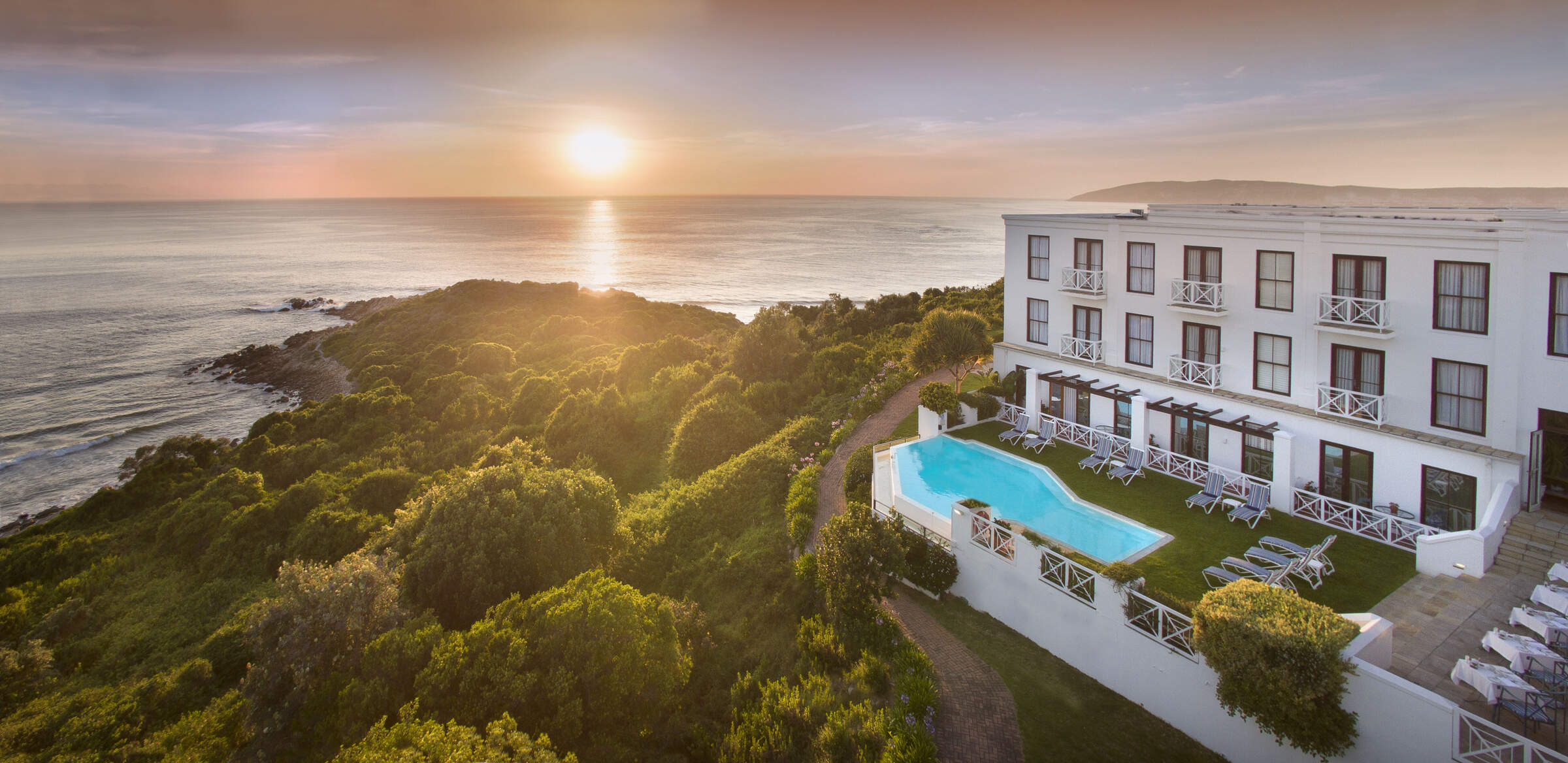
The Plettenberg
The Plettenberg is a smart, beautifully designed hotel on the rocks of Plettenberg Bay. Within walking distance from the town centre, it offers stunning views and luxury accommodation.
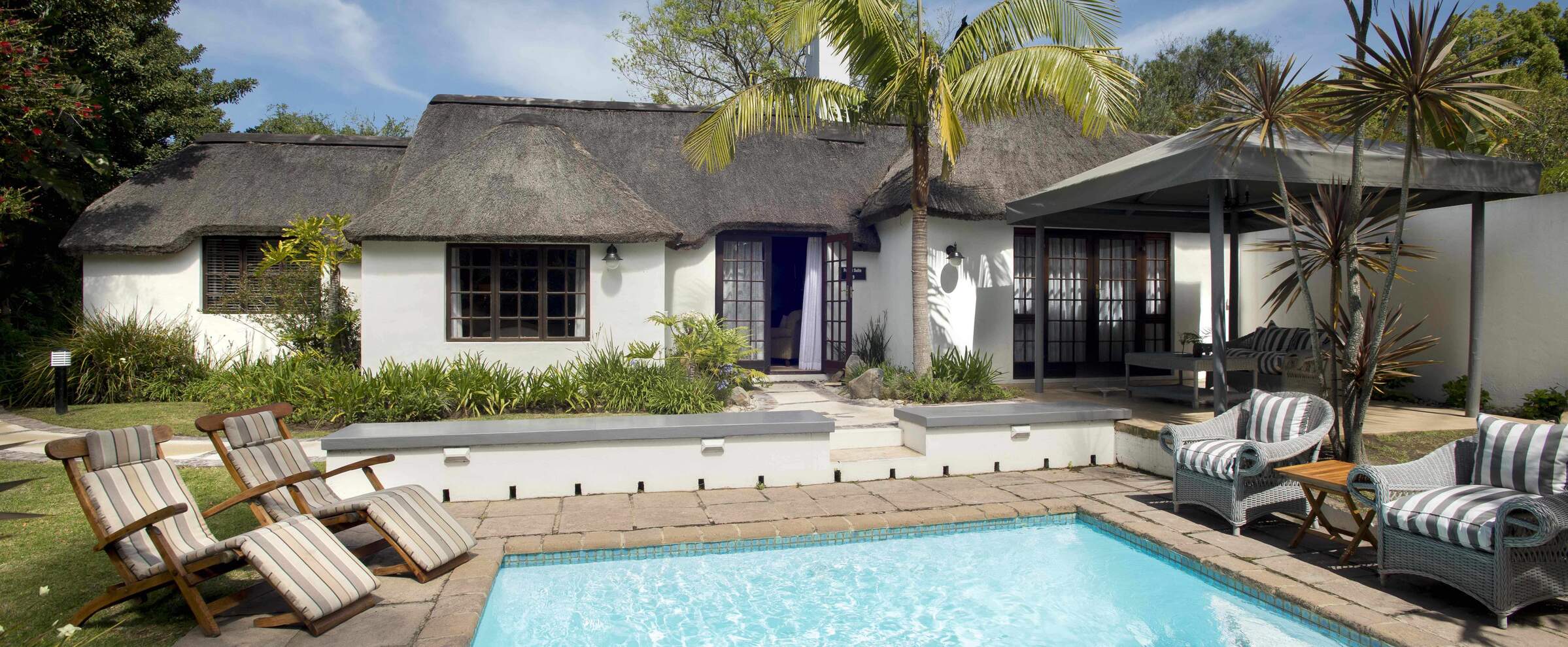
Hunters Country House
Hunters Country House is a luxurious lodge in spacious grounds. It’s an ideal base for exploring Plettenberg Bay and the Garden Route and is a great choice for families and couples alike.
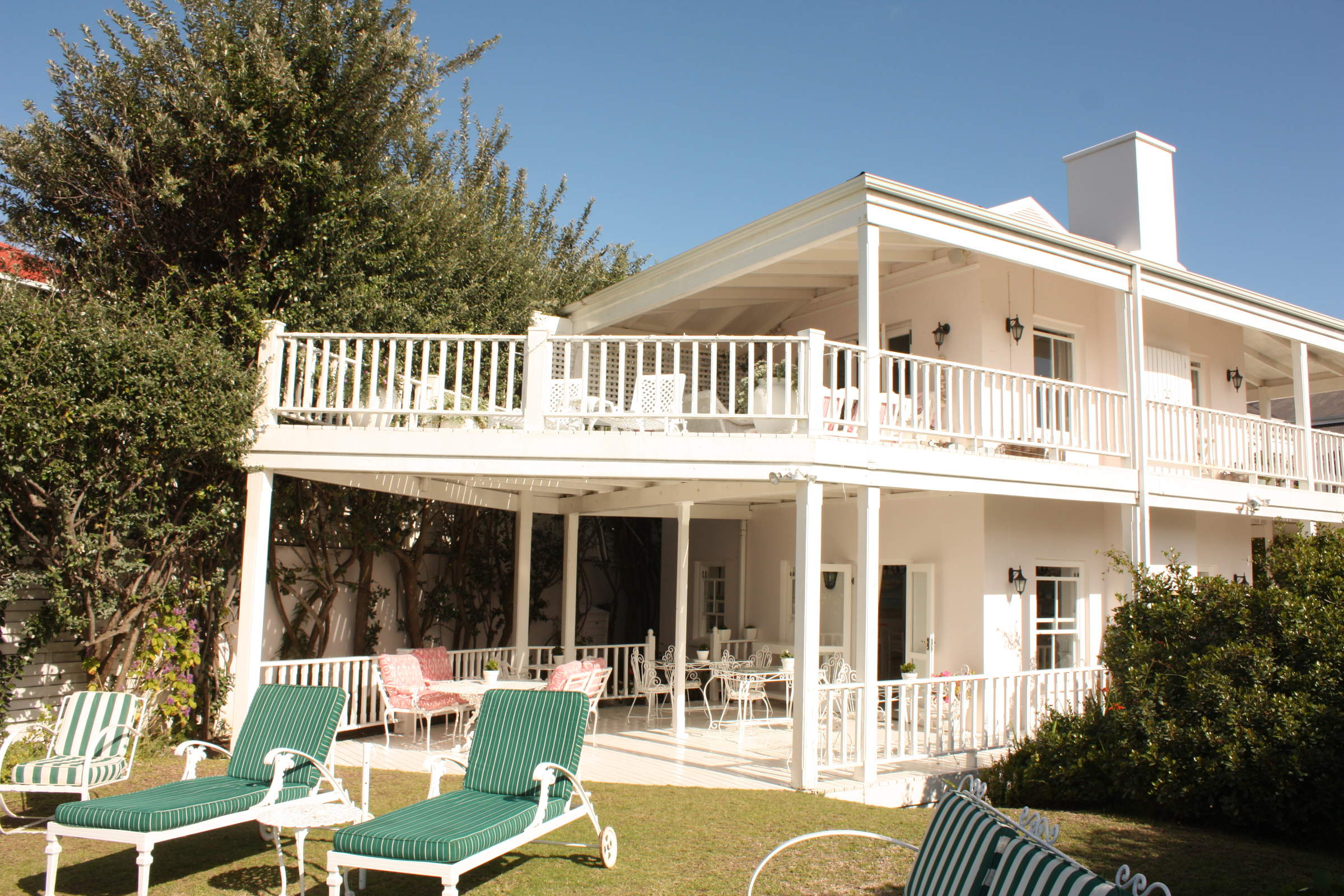
Southern Cross Beach
The Southern Cross Beach House is a delightful beach front guest house overlooking the ocean at Plettenberg Bay.
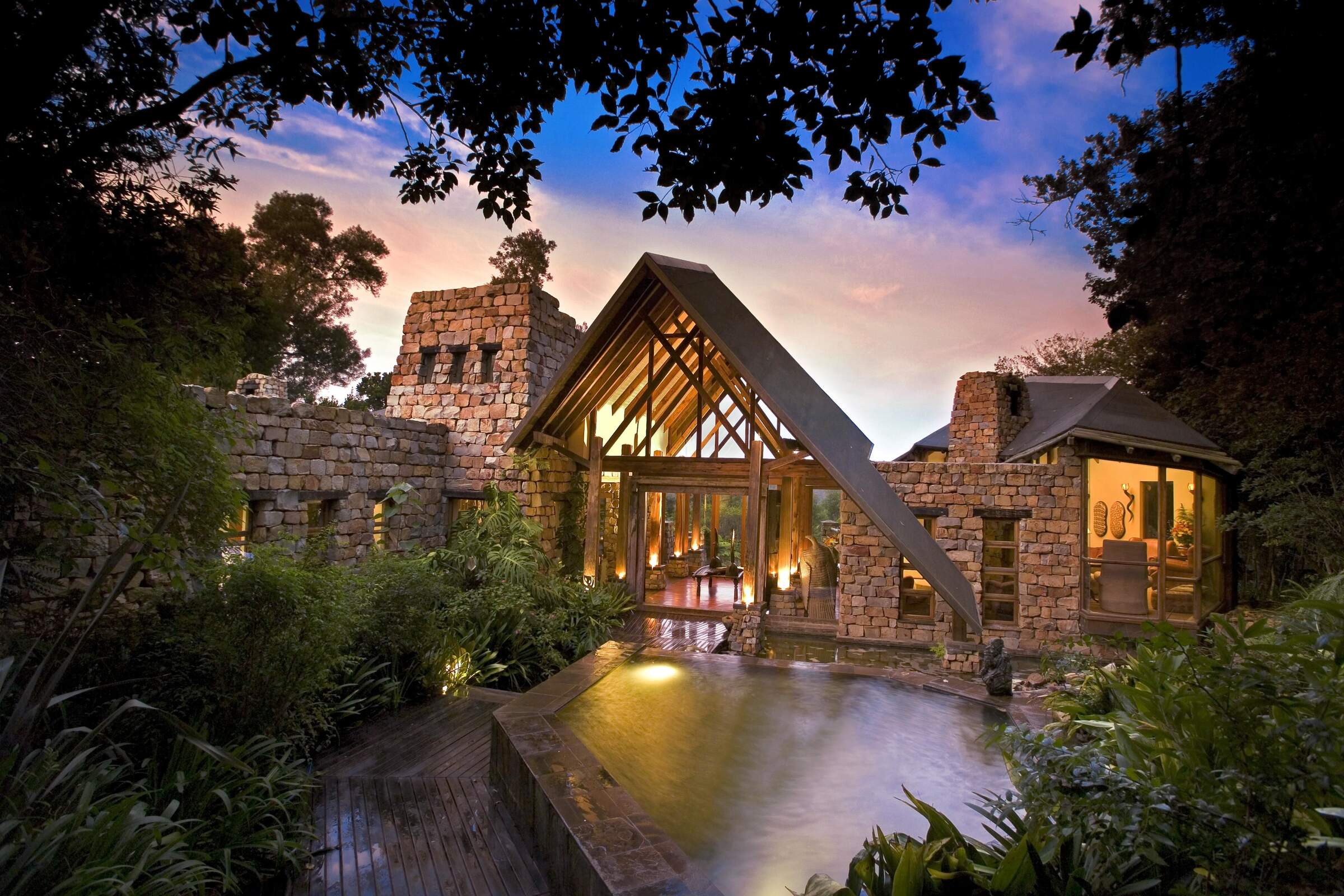
Tsala Treetop Lodge
Tsala Treetop Lodge is a smart, romantic and exclusive lodge in a stunning forest location between Knysna and Plettenberg Bay, on South Africa's Garden Route.
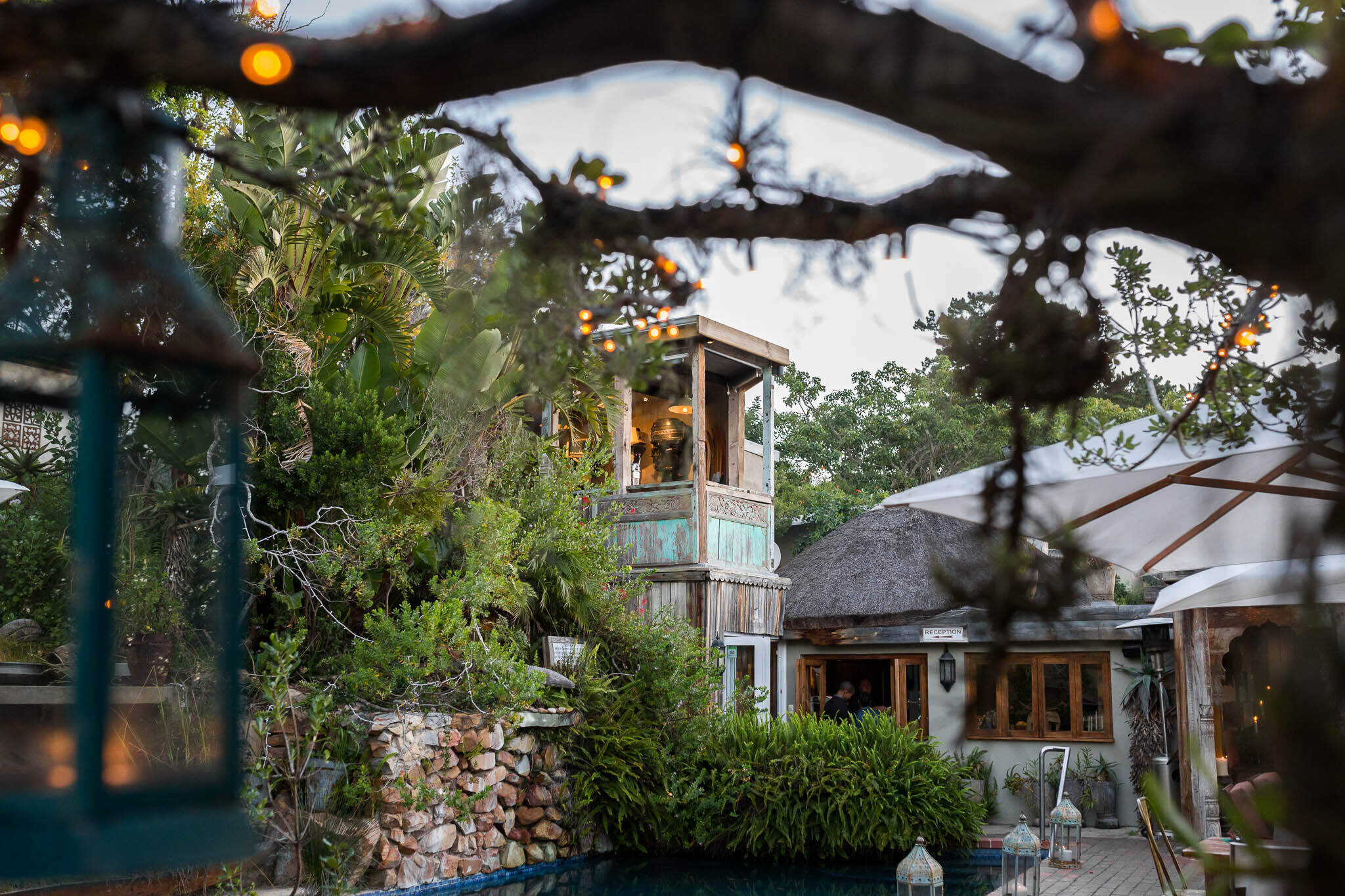
Emily Moon River Lodge
The quirky Emily Moon River Lodge lies in a peaceful spot overlooking the Bitou River near Plettenberg Bay and its nearby attractions.
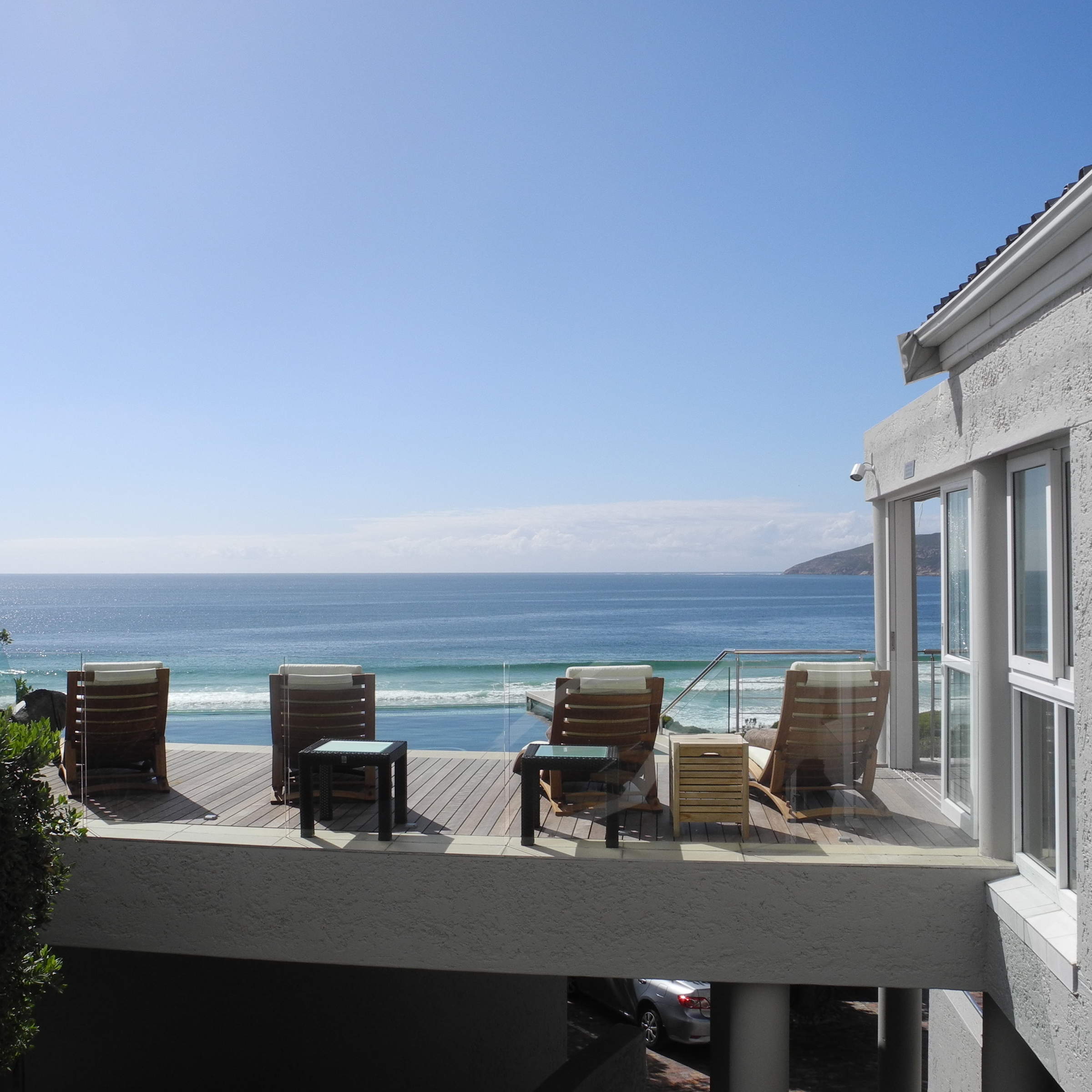
Periwinkle Guest Lodge
A stylish beachy themed guesthouse in Plettenberg Bay and within walking distance to the beach, Periwinkle offers a relaxing and friendly stay for a few days.
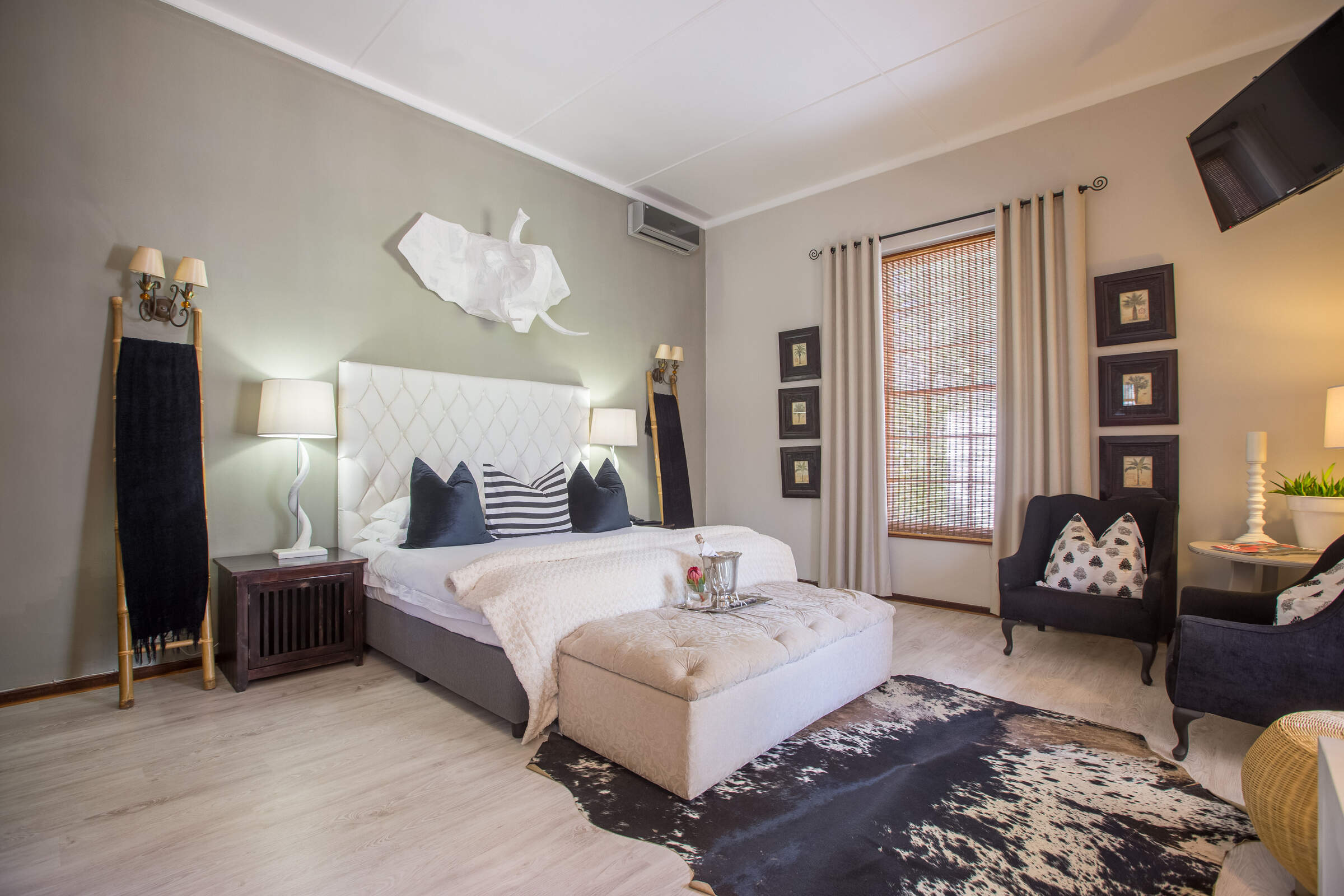
Lairds Lodge
Lairds Lodge is a comfortable owner-run guest house in a peaceful location in the heart of the Garden Route.
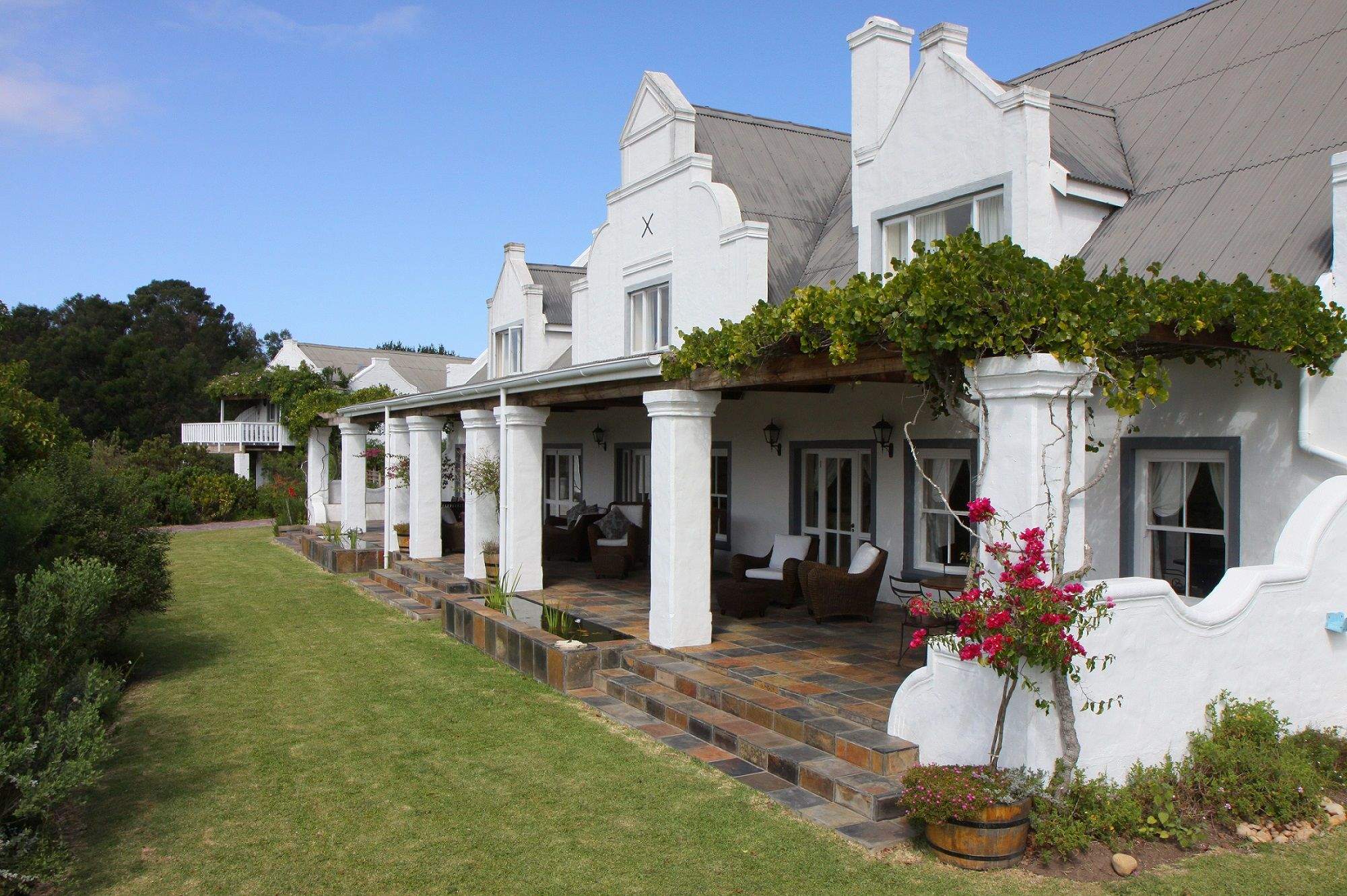
Fynbos Ridge
Fynbos Ridge is a small, owner-run guesthouse with a good environmental ethos. The accommodation is very comfortable and the location and views are exceptional.
When to go to Plettenberg Bay | Garden Route
Our month by month guide: What it's like to visit Garden Route | Plettenberg in South Africa
Jan
Feb
Mar
Apr
May
Jun
Jul
Aug
Sep
Oct
Nov
Dec
South Africa in January
January is considered one of the best months to travel. In Cape Town the weather is hot and generally dry. The Garden Route is also excellent at this time of the year but has a more temperate climate, with slightly lower temperatures and rain can fall at any time of the year. In the Kgalagadi temperatures often top 40°C and short, sharp thunderstorms are also fairly frequent. Wildlife tends to disperse, although birding is excellent.
As this is the high season in the Cape there are numerous events, festivals and outdoor activities to attract visitors. Accommodation books up quickly and it may be necessary to book at least a year in advance. Reservations will often be needed for restaurants and visitor attractions too.
- Hot, largely dry days with clear skies – except on Garden Route
- Wildlife disperses in the Kalahari but birding excellent
- Events, festivals and outdoor activities staged for the high season
- The high season in the Cape, accommodation can cost up to 50% more
- Pre-booking of activities & attractions is essential
Our view
Fantastic: the very best time to visit
Weather in January
South Africa in February
In February conditions are largely the same as in January, although temperatures can be slightly higher, especially in the interior. The wind in Cape Town starts to ease off. Although the Garden Route can experience some rain, the days are pleasantly warm and largely dry.
The Kgalagadi remains very hot, but the birding is still excellent. Wildlife viewing can be tricky especially if there has been some rain, as the resulting long grass can obscure the animals.
For visitors it’s still the high season, but with the local school holidays over and residents back at work, it is less busy than December and January. Accommodation costs remain high and it’s still advisable to pre-book certain activities and restaurants.
- Hot, largely dry days with little cloud
- Wind starts easing in Cape Town
- Slightly less busy than December & January
- Accommodation costs remain high, activities still best pre-booked
Our view
Fantastic: the very best time to visit
Weather in February
South Africa in March
March is still a very good time to visit. Conditions remain dry and very warm in Cape Town, although temperatures start dropping off towards the end of the month. The wind has usually died right down.
The Kalahari remains very hot and in years of good rains vegetation is at its most lush – making wildlife viewing tricky.
Typically, the crowds dwindle, but it can get very busy if Easter falls in March. It is also worth bearing in mind that during major events in March, including the Cape Town Cycle Tour, Cape Epic Mountain Bike Tour, The Cape Town Carnival and the International Jazz Festival, accommodation can get very full.
Attractions remain busy but booking is less essential.
- Temperatures start falling towards the end of the month
- Cape Town hosts a number of world class sport and cultural events
- Wildlife in the Kgalagadi disperses, game viewing more challenging
- Crowds diminish as the high season comes to an end
- Accommodation can get busy during major events
Our view
Fantastic: the very best time to visit
Weather in March
South Africa in April
April is South Africa’s “shoulder” season and is often the most pleasant. Not too hot, not too cold, some rain but not masses. In Cape Town and along the Garden Route days are usually sunny, warm, windless and largely dry, although in Cape Town the chance of rain increases from the end of the month.
In the Kgalagadi the rainy season is typically over and migratory birds are starting to make their journey back up North. Vegetation remains lush but wildlife viewing starts picking up towards the end of the month.
The region is still relatively busy (especially of its still Easter) but it gets quieter towards the end of the month thus availability improves. Accommodation rates start to decrease, and it becomes less important to book restaurants and attractions in advance.
- Temperatures still warm and very pleasant, with little wind.
- Rain starts easing in the Kalahari and migratory birds start to depart
- Less busy, especially towards the end of the month - busy over Easter
- Accommodation frees up and prices start to come down
Our view
A very good time to visit
Weather in April
South Africa in May
May marks the start of the dry season in the Kgalagadi. Days are warm and dry with almost zero rainfall. Night-time/early-morning temperatures can drop towards 0°C. Wildlife viewing is at its peak as animals concentrate around the few remaining water sources.
Days can still be warm and sunny in Cape Town and on the Garden Route, but the weather becomes a lot more variable. May heralds the start of the rainy season in Cape Town and the winelands. Night-time temperatures rarely drop below 10 degrees in the coastal areas.
With far fewer tourists, accommodation prices are at their lowest. There is rarely any need to pre-book activities, but reservations are still advisable at some of the top restaurants.
- Higher chance of rain in Cape Town & the Winelands
- Day time temperatures drop significantly
- Wildlife viewing peaks in the Kgalagadi
- Low season so rarely busy & very few crowds
- Low season rates at the hotels & lodges
Our view
A good time to visit, with pros & cons
Weather in May
South Africa in June
Winter is now in full swing. Maximum temperatures in Cape Town rarely reach 20°C and the rainy season is well under way. Outdoor activities therefore become limited, but a number of high-quality indoor events are organised.
The Garden Route has, in general milder weather and less rain than Cape Town.
June sees the arrival of the first whales which migrate to the South African coastline to give birth.
In the Kgalagadi, daytime temperatures are warm but nights and early mornings are bitterly cold. Wildlife viewing is excellent as animals are drawn to the few remaining permanent water points.
Overall tourist numbers are at their lowest, as are the costs of flights and accommodation.
- Cold & wet weather in Cape Town, Kgalagadi warm days but cold at night
- One of the best months for wildlife viewing in the Kgalagadi
- Whales start arriving to have their calves
- Low visitor numbers & no crowds
- Accommodation & flight prices remain low
Our view
A good time to visit, with pros & cons
Weather in June
South Africa in July
The winter weather continues with very cold nights and early mornings in the Kgalagadi and virtually no rainfall. Vegetation here is really thinning out now and water even more scarce – so wildlife is easy to spot.
Despite the winter and local school holidays, Cape Town remains a great place to visit. On a wet and cold day, the Two Oceans Aquarium, Zeitz Mocca (art museum) and the Cape Town Comedy Club all make for great days out, as does a trip to the wine country or the annual Oyster Festival at Knysna.
By mid-July most of the whales have arrived to give birth. Hermanus is the best place to see them.
At the height of the low season, so accommodation and flight prices remain low.
- Generally cold & wet in the Cape, but good quality indoor events
- Very good wildlife viewing in the Kgalagadi
- Oyster festival in Knysna
- Local school holidays can make places a little busier than usual
- Accommodation and flight prices remain low
Our view
A good time to visit, with pros & cons
Weather in July
South Africa in August
While August experiences mostly wintry weather it does mark the very beginning of spring with temperatures starting to rise. Visitors are drawn to the West Coast and Namaqualand to see the wildflowers, which start blooming in late August and can be seen until mid-September. Whales are still in abundance now too.
The Kgalagadi is now very dry and wildlife vieiwng is still good. Temperatures start climbing towards the end of the month.
Despite the weather , visitor numbers can be high as the northern hemisphere schools close for their summer holidays. It may be a good idea to book certain attractions and restaurants in advance.
Simlarly, although accommodation prices are still low, flight prices can be a little higher than in previous months.
- Temperatures start rising – but still potential for cold & wet weather
- Wildflowers on the West Coast & in Namaqualand
- Good wildlife viewing in the Kgalagadi
- Whales continue to attract visitors
- Can get busy due to northern hemisphere school summer holidays
Our view
A good time to visit, with pros & cons
Weather in August
South Africa in September
Good wildlife viewing in the Kgalagadi continues and daytime temperatures increase quite dramatically. Mornings and evenings are still on the chilly side, but not as cold as they are in June, July and August.
The 1st of September is officially the start of spring in Cape Town. Days become warmer but not quite warm enough to enjoy the city’s beautiful beaches. Venues all over Cape Town play host to various artists during the Cape Town Fringe Festival.
Rainy days are fewer, but night times can still get chilly. Many hotels are still charging low season rates making September great value for money.
Elsewhere, Hermanus hosts the popular annual Whale Festival, and in the West of the Cape, wildflowers continue to bloom until the middle of the month.
- The start of spring; temperatures start rising
- Whale festival in Hermanus
- Cape Town Fringe Ferstival attracts a wide range of artists
- Wildflowers blooming well until the middle of the month
- Good wildlife viewing continues in the Kgalagadi
Our view
A very good time to visit
Weather in September
South Africa in October
The weather starts warming up nicely, Cape Town experiences pleasant days, with much less rain, nights can still be quite cool, but not cold. Some days are now warm enough to enjoy the beach. This is one of the best months to visit the Cape Region.
October is one of the hottest months in the Kalahari. Water remains very scarce, so the wildlife viewing is still very good. Towards the end of the month the odd spectacular thunderstorm is possible with much lightning and thunder. Migratory birds start to arrive, and resident species gear up for the breeding season.
The whales are still present with Hermanus and False Bay the best places to see them.
- Days start warming up; fewer rainy days in Cape Town
- Very hot in the Kalahari – thunderstorms season starts
- Migratory birds start arriving & resident birds start breeding
- Whale watching still excellent in Hermanus and False Bay areas
- Start of the high season, getting busy and accommodation prices rise
Our view
A very good time to visit
Weather in October
South Africa in November
By November Cape Town is experiencing summer conditions with hot, clear days and warm, pleasant evenings. It’s a great month to enjoy the beaches before the peak holiday season in December. There are no real downsides to visiting in November and you may even get a few accommodation specials before prices go up for the festive season. Kirstenbosch Botanical Gardens begins their summer outdoor concerts with local and international artists performing.
The Kgalagadi remains hot but thunderstorms are a bit more regular. With the rains, water sources become more plentiful and wildlife disperses but this is when herbivores such as Springbok start lambing. Photography improves as conditions become less hazy.
This is the last month for regular whale sightings – they tend to migrate back down south by early December.
- Summer now in full swing, with temperatures often reaching 30°C
- Rainy days scarce; evenings warm & very pleasant
- Antelope start lambing in the Kgalagadi; wildlife generally dispersed
- Last month for regular whale sightings
- Good time to visit Cape Town before the peak holiday season
Our view
Fantastic: the very best time to visit
Weather in November
South Africa in December
December is usually Cape Town’s hottest month when temperatures frequently breach 30°C. You can expect hot and cloudless days, and almost no rain but December does see the occasional very windy day.
The Kalahari is still hot, but temperatures are not quite as high as previous months. With the rainfall the bush transforms into various shades of green. Wildlife disperses as water become more widely available.
The Garden Route enjoys warm to hot days with rain at any time but usually not over an extended period.
Mid to late December becomes incredibly busy with concerts, festivals and various outdoor activities in Cape Town. Hotel prices rise, tourist attractions and beaches are crowded and most popular sites and restaurants need to be booked in advance.
- Long, hot sunny days
- Kgalagadi bursts into life as rainy season kicks in
- Wildlife viewing a bit trickier as wildlife disperses
- Cape Town buzzing with concerts, events, festivals etc
- Peak season: attractions get very busy & accommodation costs rise
Our view
Fantastic: the very best time to visit
Weather in December
Plettenberg Bay: In detail
Plettenberg Bay
National parks, reserves and major attractions
Some of the most obvious attractions include:
Keurbooms Lagoon
Immediately below the smart town of Plettenberg Bay there’s a lovely beach – which stands on Keurbooms Lagoon. This lagoon continues north for a few kilometres, separated from the ocean by a narrow, bush covered sand spit, and is a favourite of birdwatchers. More than 200 species have been recorded here, from orange-breasted sunbirds to narina trogons and African black oystercatchers.
This is a lovely spot for family excursions: a series of stunning sandy beaches with many picnic spots, sheltered swimming, and opportunities for other water activities including fishing, boating, canoeing, windsurfing and kite-surfing.
Robberg Nature Reserve
The Robberg Marine Protected Area (MPA) is a long, broad peninsula, which conserves several coastal habitats – rocky areas, sandy beaches and subtidal rocky platforms. It protects many species, including the rare blue duiker (the Western Cape’s smallest antelope) and a range of vulnerable fish species.
Robberg was first named decades ago due to the huge number of seals (rob means seal in Afrikaans, and bergis the word for hill or mountain). The peninsula is an excellent viewpoint not only for seals, but also for Bryde’s whales and southern right whales, common and bottlenose dolphins, orcas and great white sharks.
The rocks here date back 120 million years and in some of the caves along this peninsula there is evidence of middle- and late-Stone Age habitation. Within Robberg Reserve you can do a variety of activities, including hiking, walking and kayaking – the latter a very popular way of getting close to the marine mammals swimming close to the rocky shore.
Monkeyland
Monkeyland opened in 1998, in the Crags area, east of Plettenberg Bay. It consists of a single massive enclosure within which is a large area of indigenous forest – populated by more than 400 individuals from 11 different species of primates, most of them actually not African species. These, and a few other non-primates, live together freely.
Among the animals here you’ll find capuchin, howler, vervet, saki and spider monkeys, plus hanuman and spectacled langurs, and gibbons. Visitors usually join small groups to walk through the area, led by a ranger who knows the various monkeys, and the walk usually includes crossing a 128-metre-long suspension bridge, level with the forest canopy.
Birds of Eden
Birds of Eden is another wildlife attraction built around a fully-enclosed natural valley. It’s a massive and very impressive construction. It claims to be the largest ‘single dome free-flight aviary’ in the world, with around 3,500 birds from about 200 different species. Here you’ll find parrots, turacos, toucans, ibises, flamingos and hornbills, along with some mammals and various species of flowering plant. Some of the animals are extremely tame!
Flora and fauna around Plettenberg Bay
Plettenberg Bay’s vegetation
Plettenberg Bay is located in an area with many reserves, which host a wide range of wildlife and habitats. Plettenberg Bay embraces two of the natural biomes in South Africa, such as fynbos and forest.
In the Keurbooms Nature Reserve you'll find keurboom trees growing on the coastal forest edges, along with indigenous forest, wetlands and fynbos. Within Birds of Eden and Monkeyland, you’ll see a vast range of shrubs and flowering plants.
Plettenberg Bay's animals
The area around Plettenberg Bay doesn’t have any big game, but there is wildlife to be seen. If you’re lucky you’ll spot blue duikers, Egyptian fruit bats, eastern grey squirrels, bushpigs, baboons, vervet monkeys, bushbuck and mongooses. The most common species of reptiles include dwarf chameleons and (up in the trees, thank goodness!) boomslangs. In the Keurbooms Nature Reserve you'll find Cape clawless otters and several varieties of small antelope.
Meanwhile, more than 100 species of fish are known to occur along Plettenberg coast, including double sash butterflyfish, galjoen, yellow belly and rock cod on reefs. Beside the fish, some of the finest soft coral reefs in the world are found here along with sponges, starfish and many shellfish including an endemic Pansy shell. It’s a distinctive flower-shaped seashell and the symbol representing the town.
Regarding to wildlife, the marine mammals are a real feature of the area. The Robberg Peninsula is home to a large Cape fur seal colony and here great white sharks can also be spotted from the peninsula. From various viewpoints in the town as well as from Robberg Peninsula you can spot southern right and humpback whales from July to December. Some mammals can be seen throughout the year, including Bryde's whales; and dolphins, including bottlenose, common and humpback dolphins. Killer and sei whales are occasionally sighted in the bay.
Plettenberg Bay’s birdlife
More than 260 species of birds have been spotted in the Plettenberg area. The many parks and reserves in Plettenberg Bay boast a variety of birdlife thanks to the different habitats, including orange-breasted sunbird in the fynbos, the elusive narina trogon in the forest and the African black oystercatcher on the Plettenberg Bay beaches.
The Keurbooms lagoon hosts more than 200 species and attracts estuary and freshwater birds such as African fish eagles, kingfishers, African darters and Egyptian geese.
Plettenberg Bay hosts one of the largest seagull breeding colonies along the South African coast around Keurbooms River and along the shores there are many pelagic birds in the area as well as African oystercatchers.
Of course, at Birds of Eden there is a huge variety of either ground living or arboreal birds – some native to this area, others from across the globe. Travellers get amazingly close to the birds here – and we found being close to flamingos amazing, and some of the parrots and parakeets particularly endearing.
History of the Plettenberg Bay area
The first Europeans in Plettenberg Bay were 100 men stranded here for nine months when the San Gonzales sank in 1630. Then in 1763 the first Europeans settlers came to the bay; they were stock farmers, hunters and frontiersmen from the Western Cape.
Plettenberg Bay has had many names over the past 500 years. In 1448, Portuguese explorer Bartolomeu Dias called it the 'Bay of Lagoons'. In 1576, his countryman, Manuel da Mesquita Perestrello, called it 'Bahia Formosa', which means beautiful bay. Later the Dutch also gave the bay different names, including Content Bay and Pisang River Bay. It was only in 1778 that it was named Plettenberg Bay, after Governor Joachim von Plettenberg, who opened a timber post on the shores of the bay and incorporated it under the administrative sovereignty of the Dutch-East India Trading Company in 1778.
What to do and see: activities around Plettenberg Bay
- Bungee Jumping: the highest commercial bungee jump in the world is at Bloukrans River Bridge.
- Rock angling: sites include Nature's Valley, Keurbooms, Lookout Rocks, Beacon Island and Robberg Beach. Anglers can expect to catch galjoen, steenbras, tuna, hake and calamari.
- Mountain biking: the Harkerville Cycle Route is a popular route; it’s a good area for mountain biking.
- Hiking: there are many hikes and short walks in the area: Robberg Peninsula is particularly good.
- Wild Waters Park: an adventure park, especially for children, in the Piesang River Valley.
Map of Plettenberg Bay | Garden Route
Choices for where to stay in Plettenberg Bay | Garden Route
Plettenberg Bay | Garden Route: Holidays

Bontebok Self-drive Safari
12 days • 5 locations
CAPE TOWN AIRPORT TO PORT ELIZABETH AIRPORT
This varied and great-value self-drive trip visits Cape Town, the Winelands and diverse sections of the Garden Route, staying at great places with real local character. It’s ideal for active couples and families who want to explore the Cape’s stunning locations.
US$1,870 - US$1,960 per person

Cape Genet Self-drive Safari
20 days • 8 locations
CAPE TOWN AIRPORT TO CAPE TOWN AIRPORT
Enjoy fine-dining in Cape Town, whale-watching in Hermanus, and a range of walking and water-based activities throughout De Hoop’s Nature Reserve, the Klein Karoo and Plettenberg. This relaxed self-driven safari concludes with stays in The Winelands and Namaqualand.
US$3,840 - US$4,540 per person

Cape Grysbok Self-drive Safari
20 days • 8 locations
CAPE TOWN AIRPORT TO CAPE TOWN AIRPORT
Explore Cape Town, Hermanus, Franschhoek and Namaqualand, amongst other memorable destinations, during this leisurely self-driven safari. Fine dining, varied activities and impressively comfortable lodges, estates and country houses await.
US$5,000 - US$7,530 per person
Best 8 hotels and places to stay in Plettenberg Bay
Listed below are our recommendations for nice places to stay in this region. Ask us for more details of what's likely to suit you best!

The Plettenberg
The Plettenberg is a smart, beautifully designed hotel on the rocks of Plettenberg Bay. Within walking distance from the town centre, it offers stunning views and luxury accommodation.

Hunters Country House
Hunters Country House is a luxurious lodge in spacious grounds. It’s an ideal base for exploring Plettenberg Bay and the Garden Route and is a great choice for families and couples alike.

Southern Cross Beach
The Southern Cross Beach House is a delightful beach front guest house overlooking the ocean at Plettenberg Bay.

Tsala Treetop Lodge
Tsala Treetop Lodge is a smart, romantic and exclusive lodge in a stunning forest location between Knysna and Plettenberg Bay, on South Africa's Garden Route.

Periwinkle Guest Lodge
A stylish beachy themed guesthouse in Plettenberg Bay and within walking distance to the beach, Periwinkle offers a relaxing and friendly stay for a few days.

Emily Moon River Lodge
The quirky Emily Moon River Lodge lies in a peaceful spot overlooking the Bitou River near Plettenberg Bay and its nearby attractions.

Fynbos Ridge
Fynbos Ridge is a small, owner-run guesthouse with a good environmental ethos. The accommodation is very comfortable and the location and views are exceptional.

Lairds Lodge
Lairds Lodge is a comfortable owner-run guest house in a peaceful location in the heart of the Garden Route.

Looking for inspiration on where to travel next?
Visit our trip chooser to explore your options and find inspiration for your perfect African adventure
Inspire me